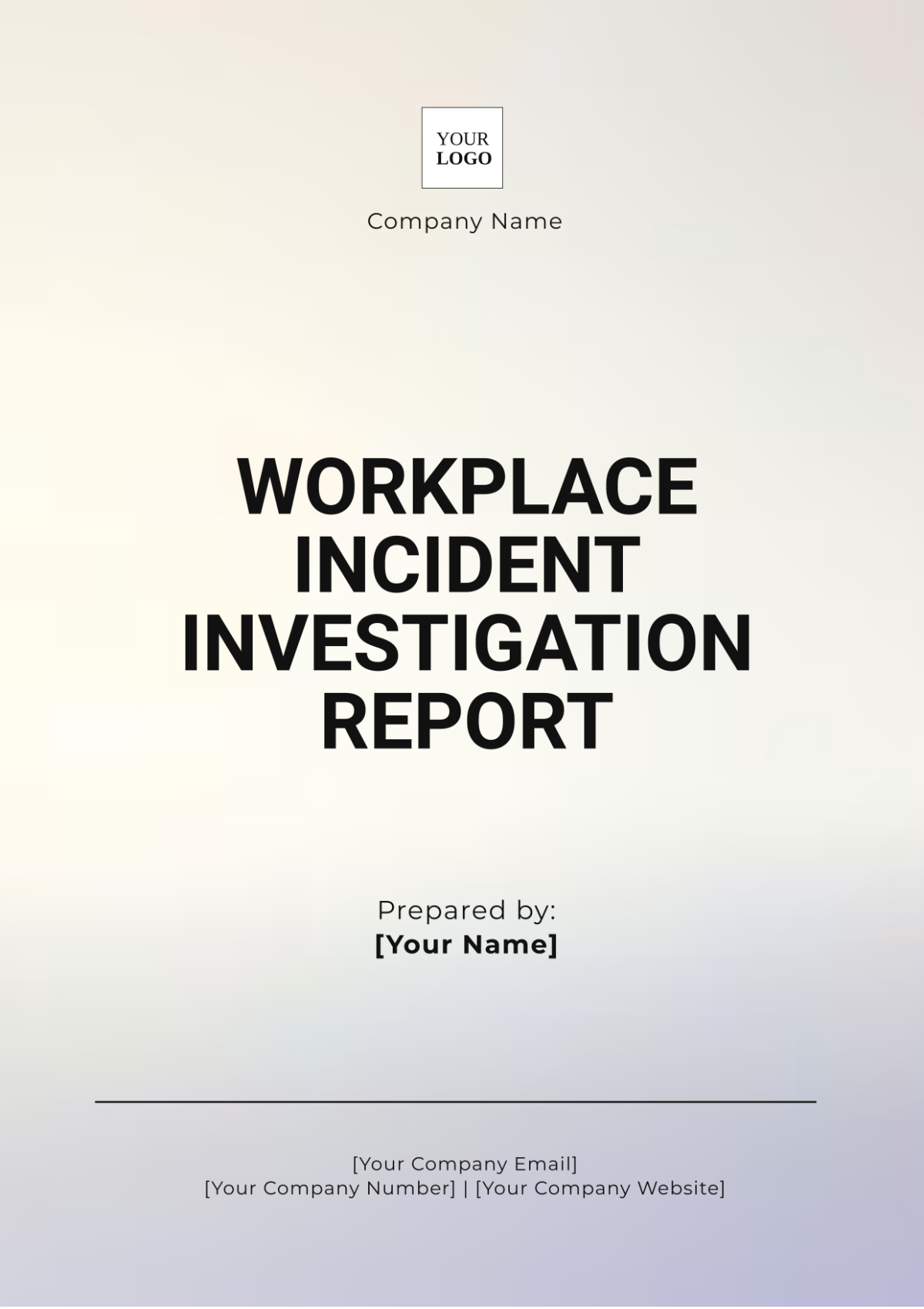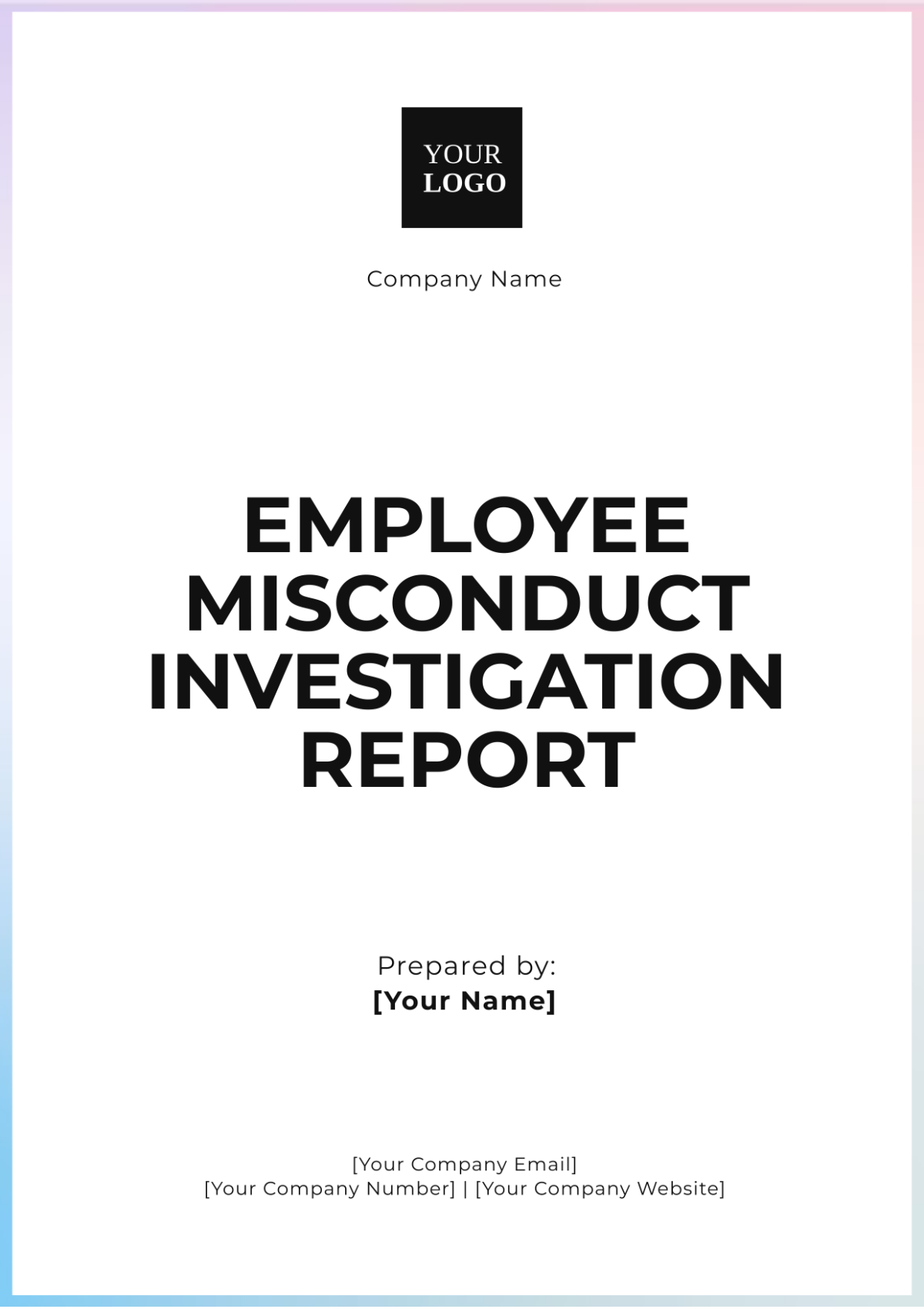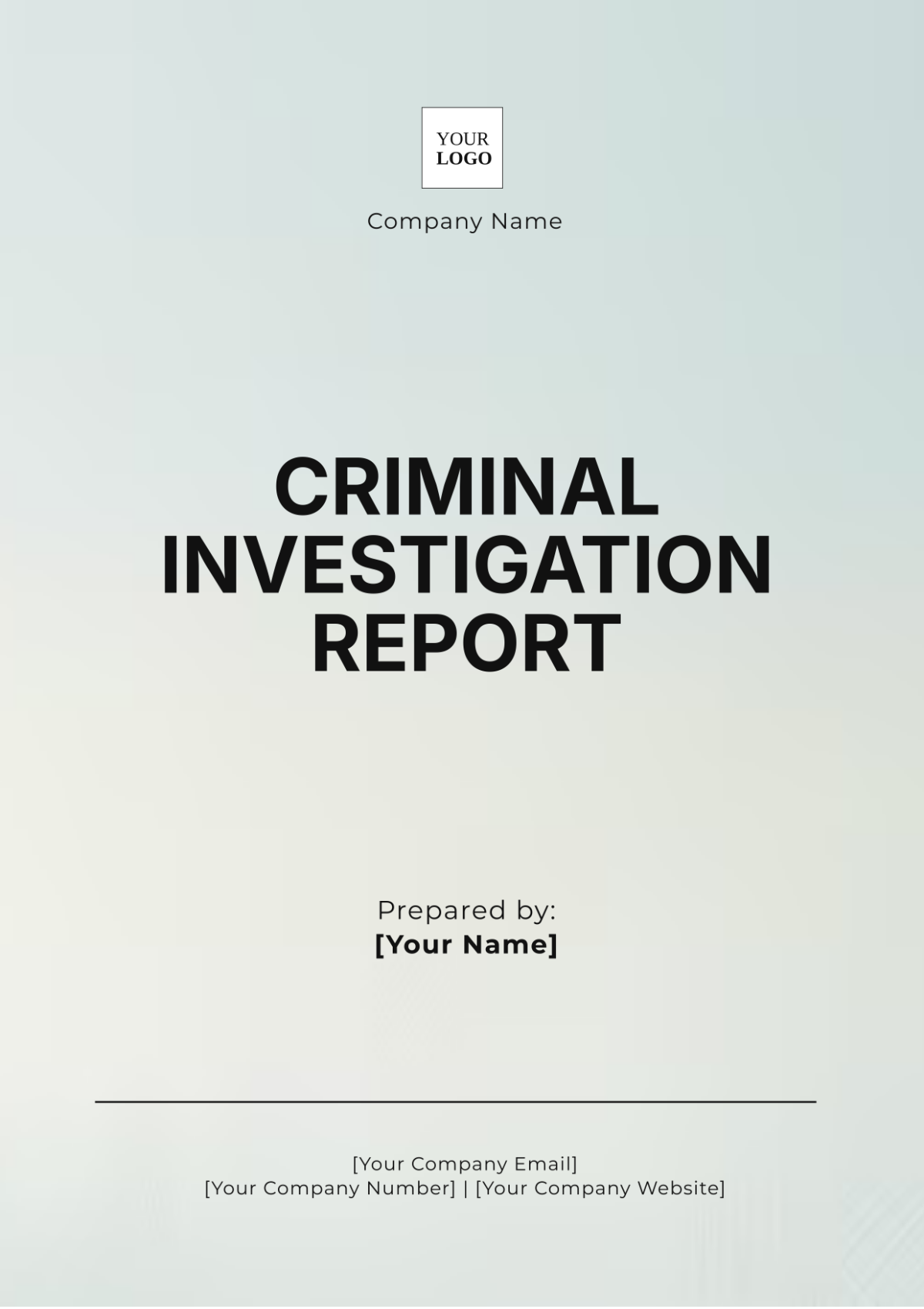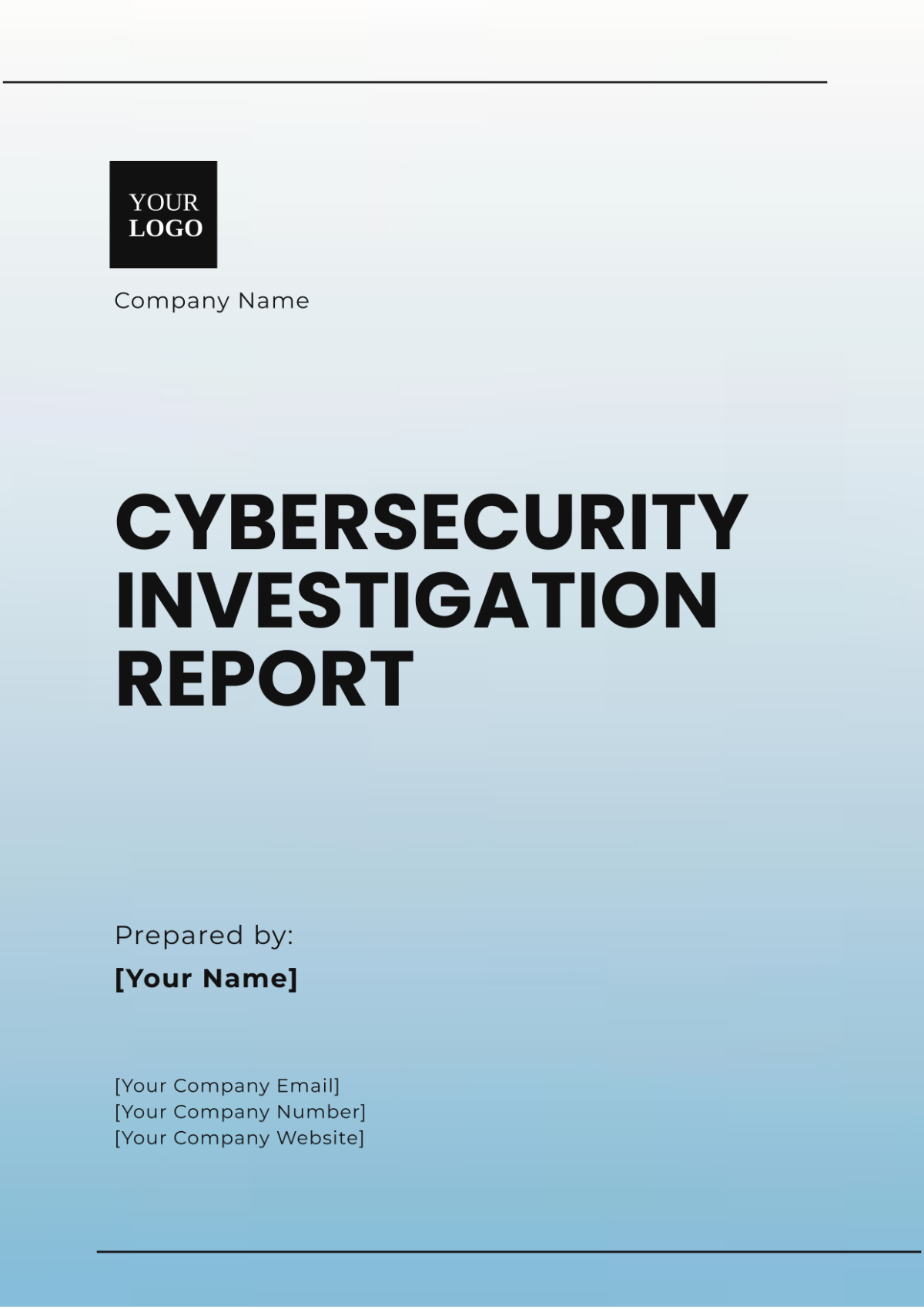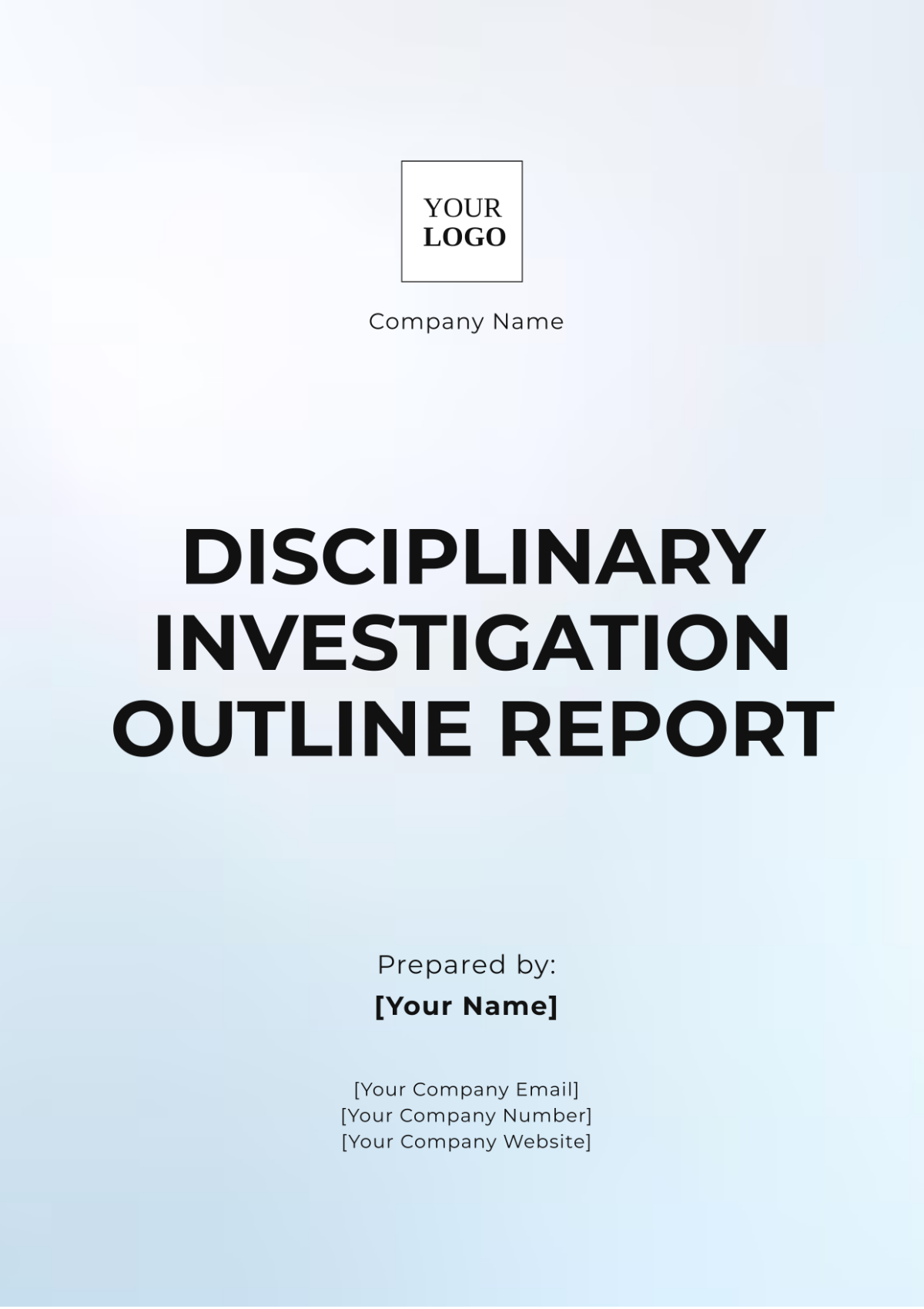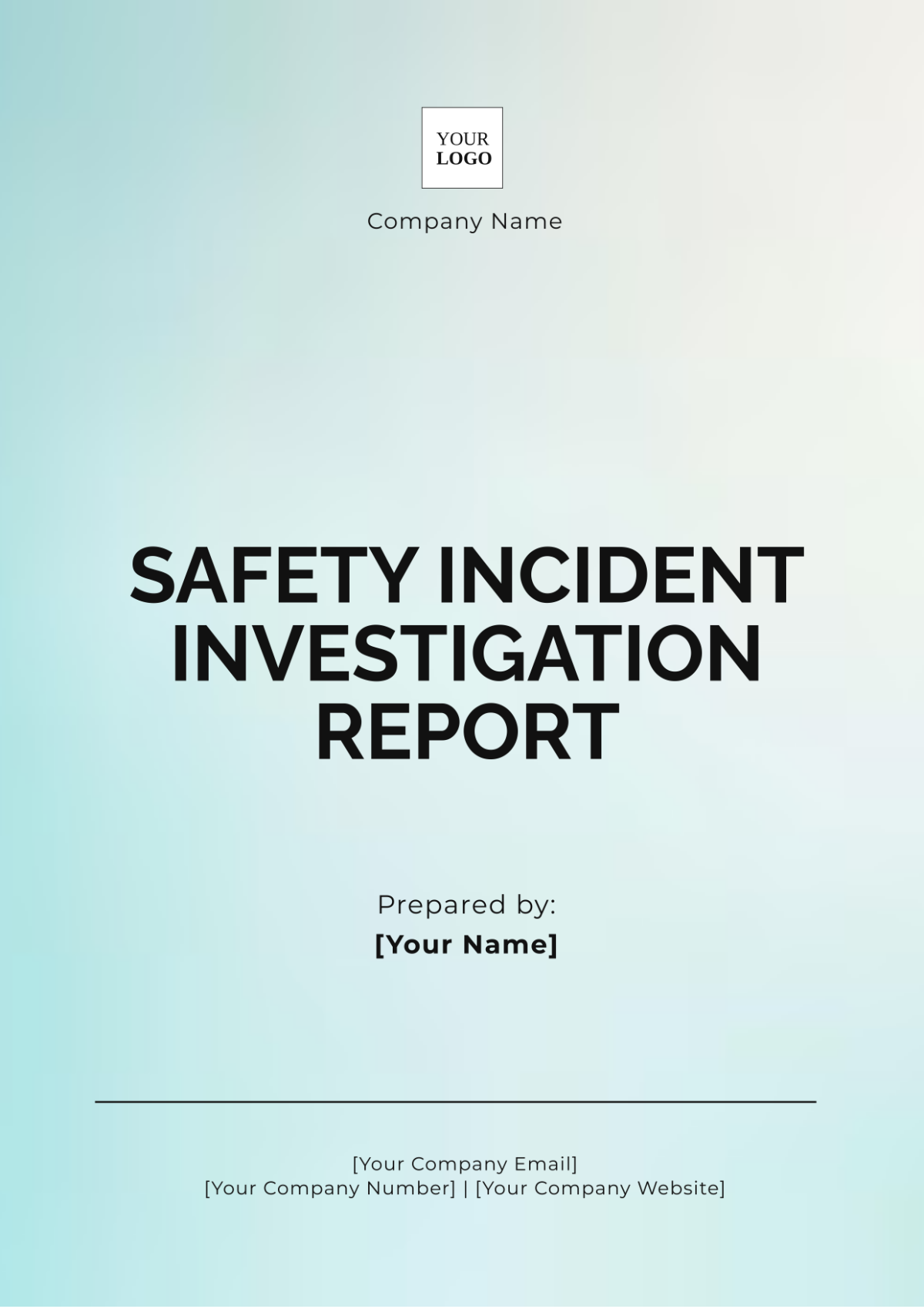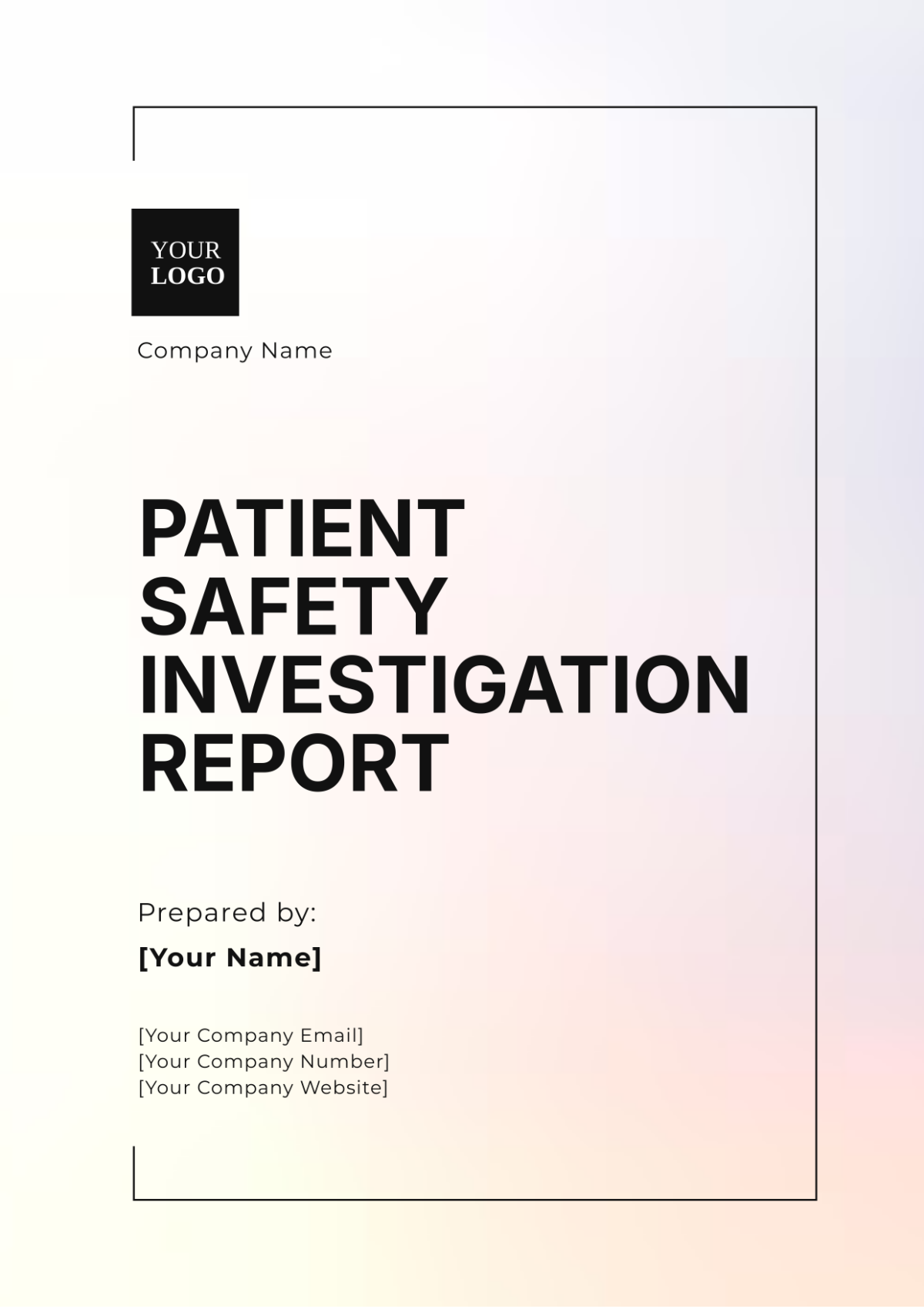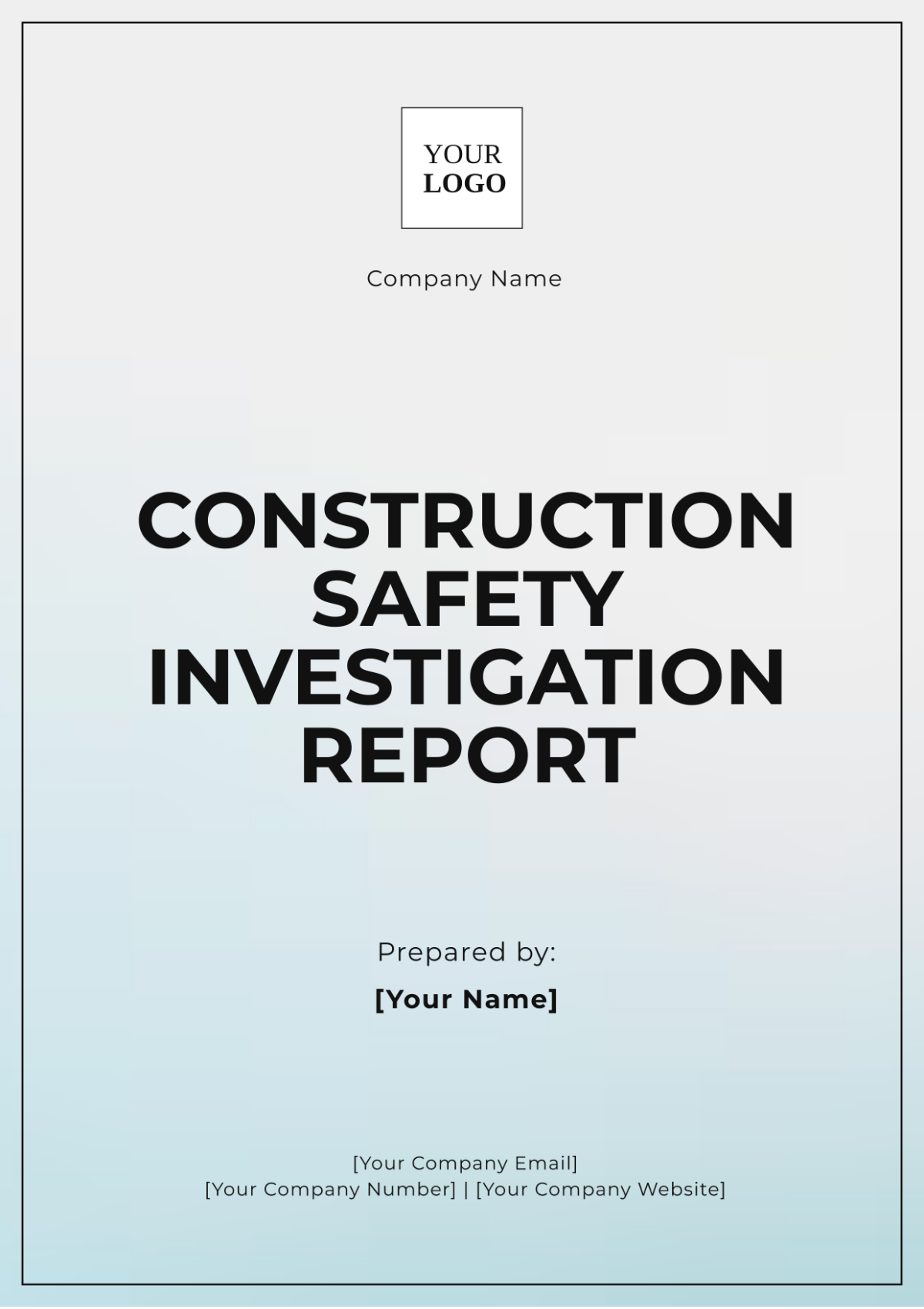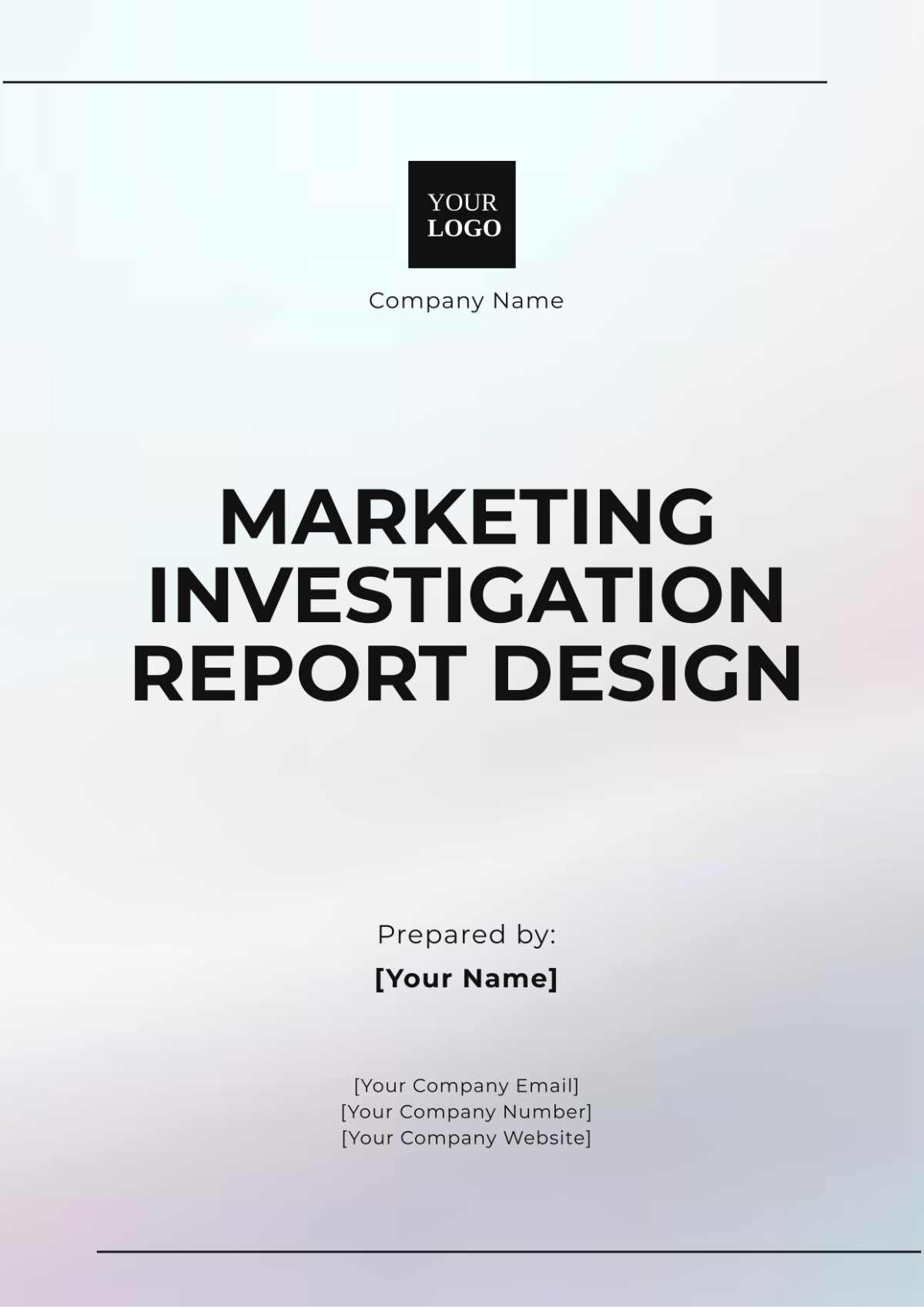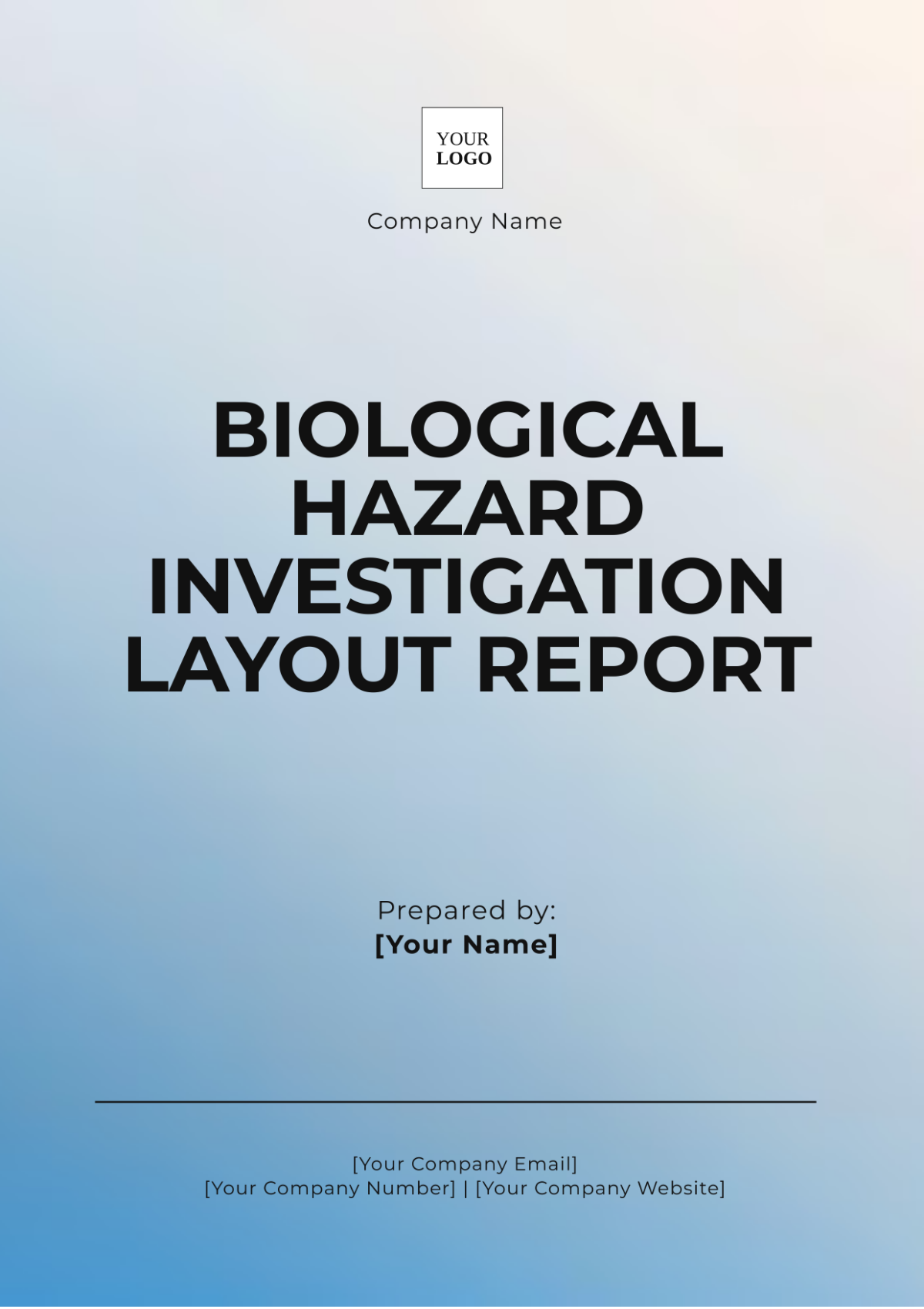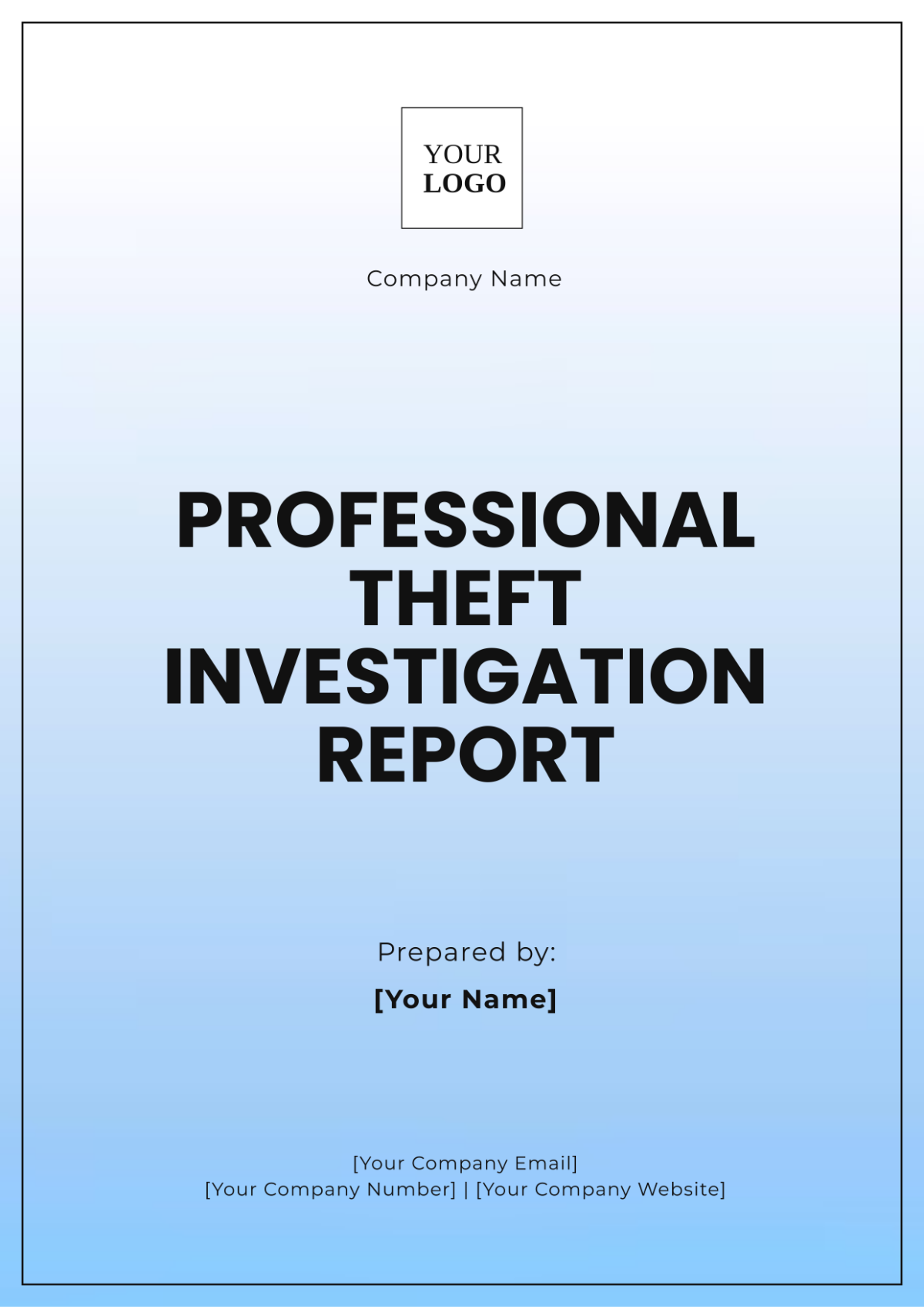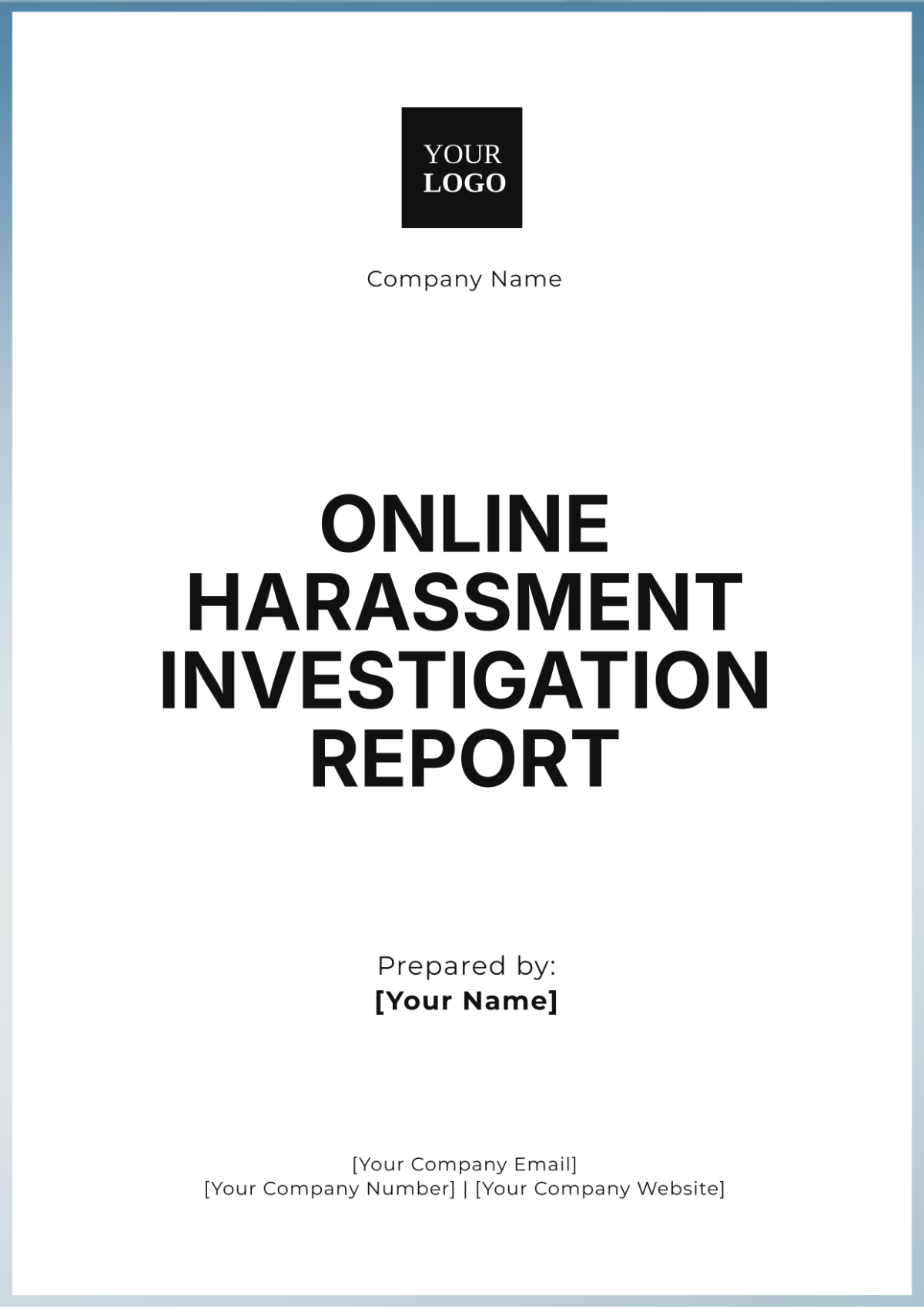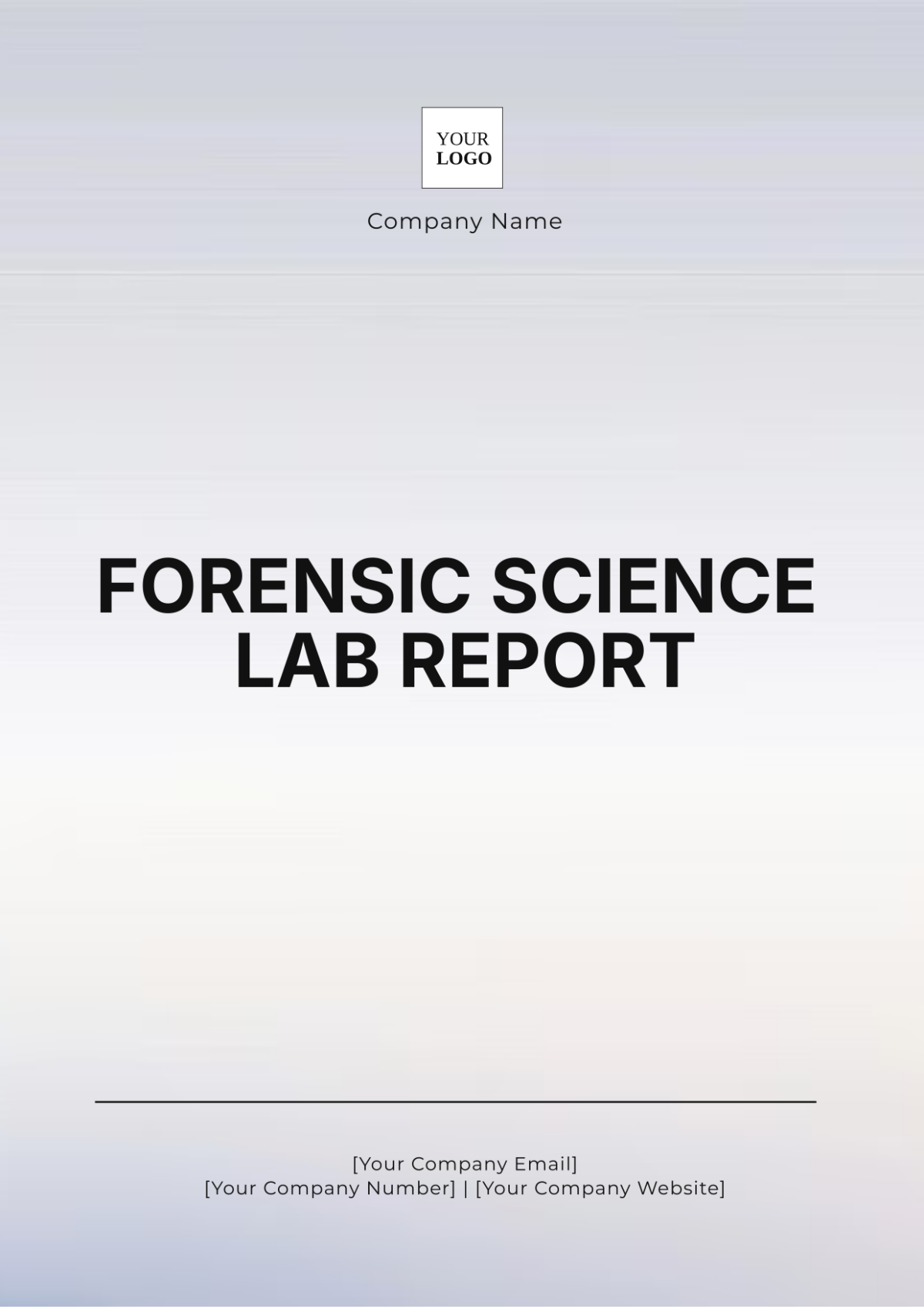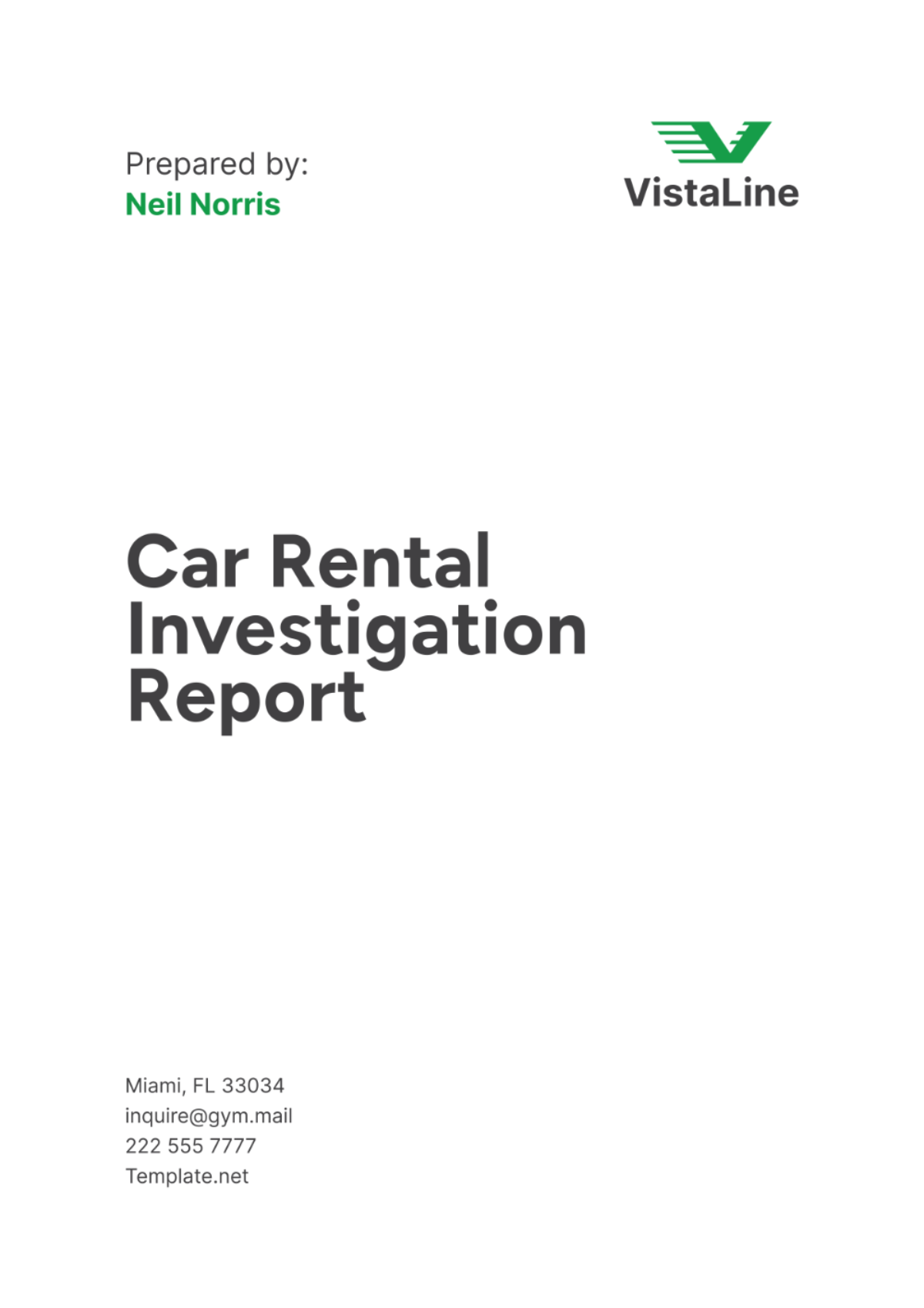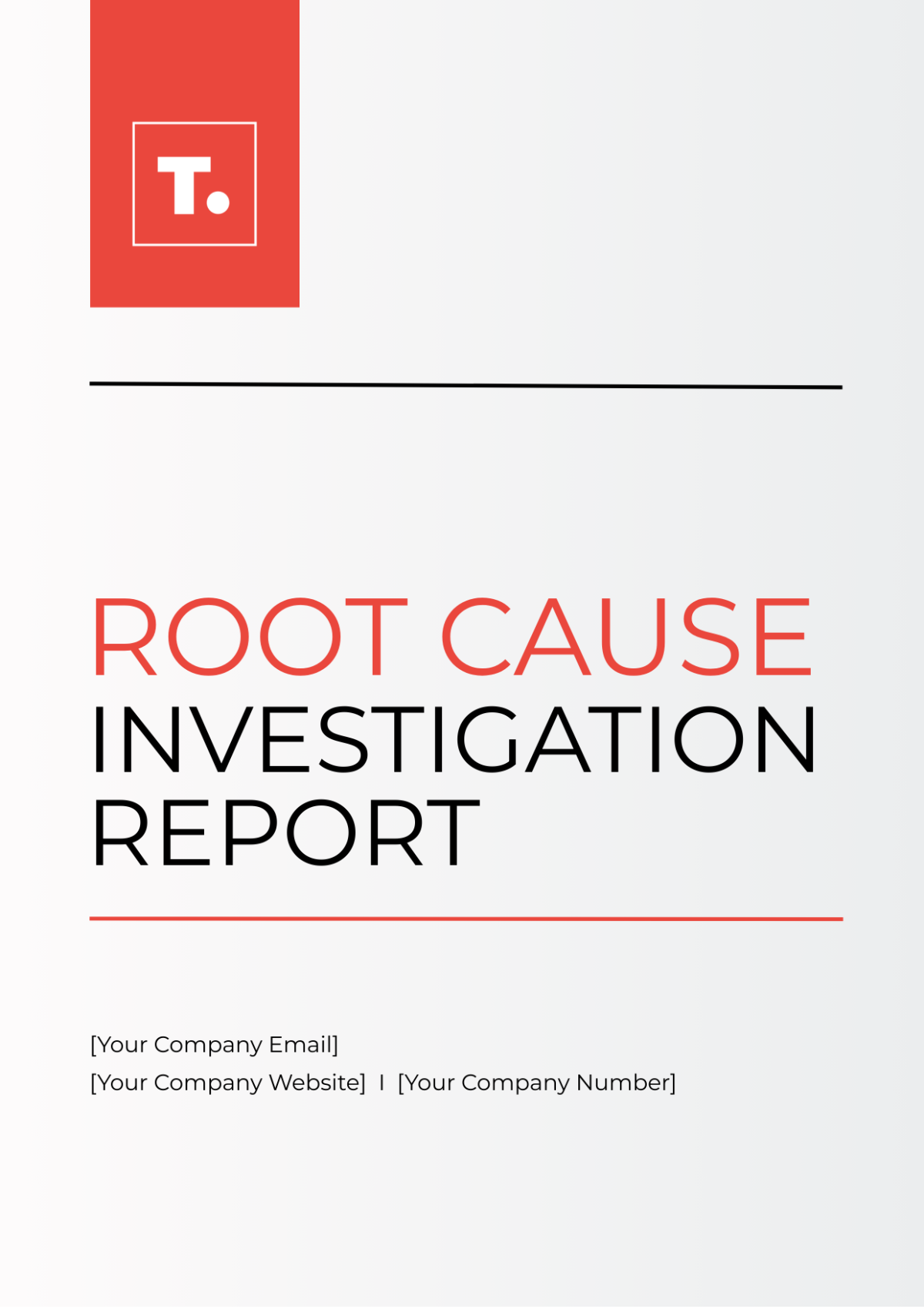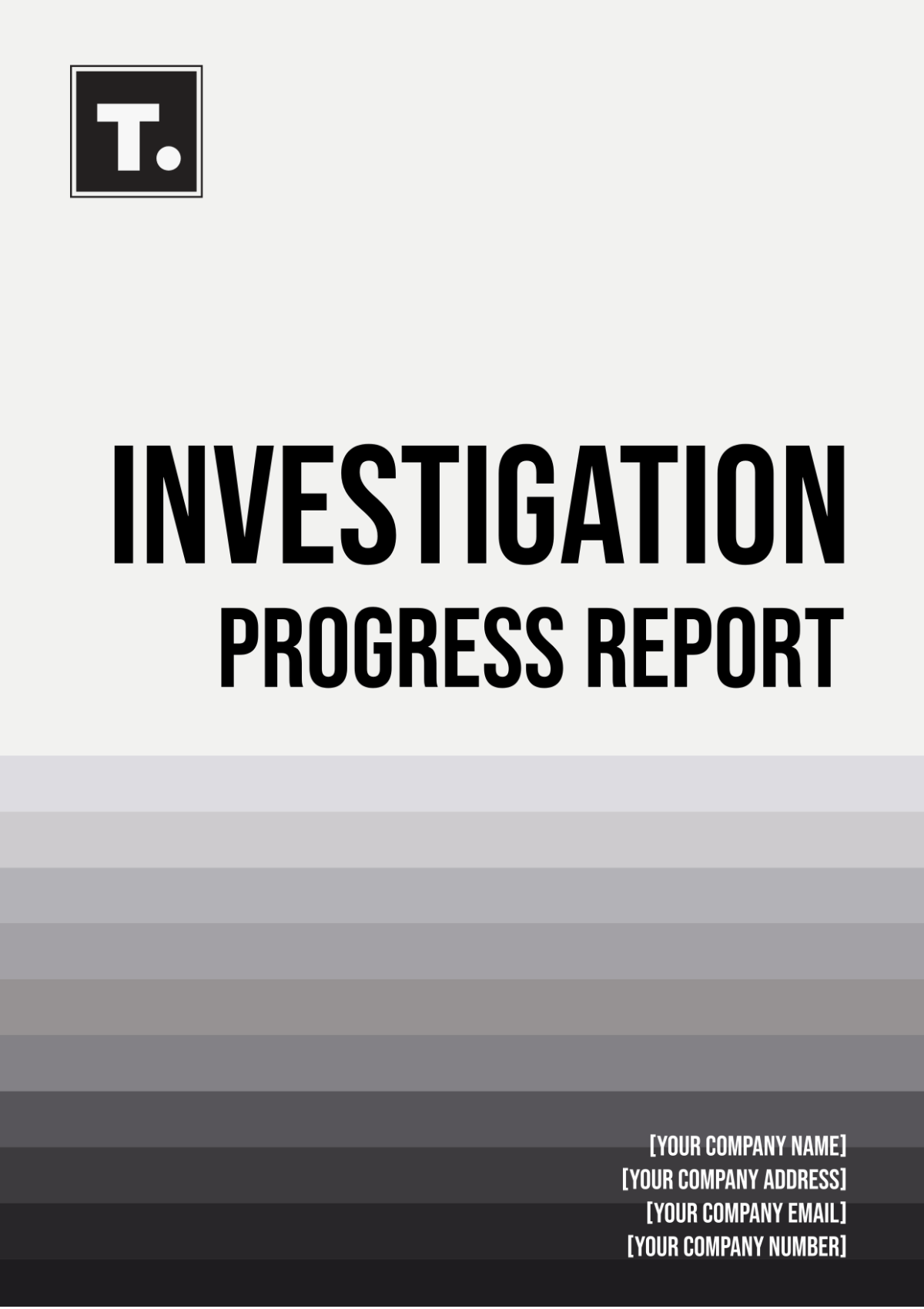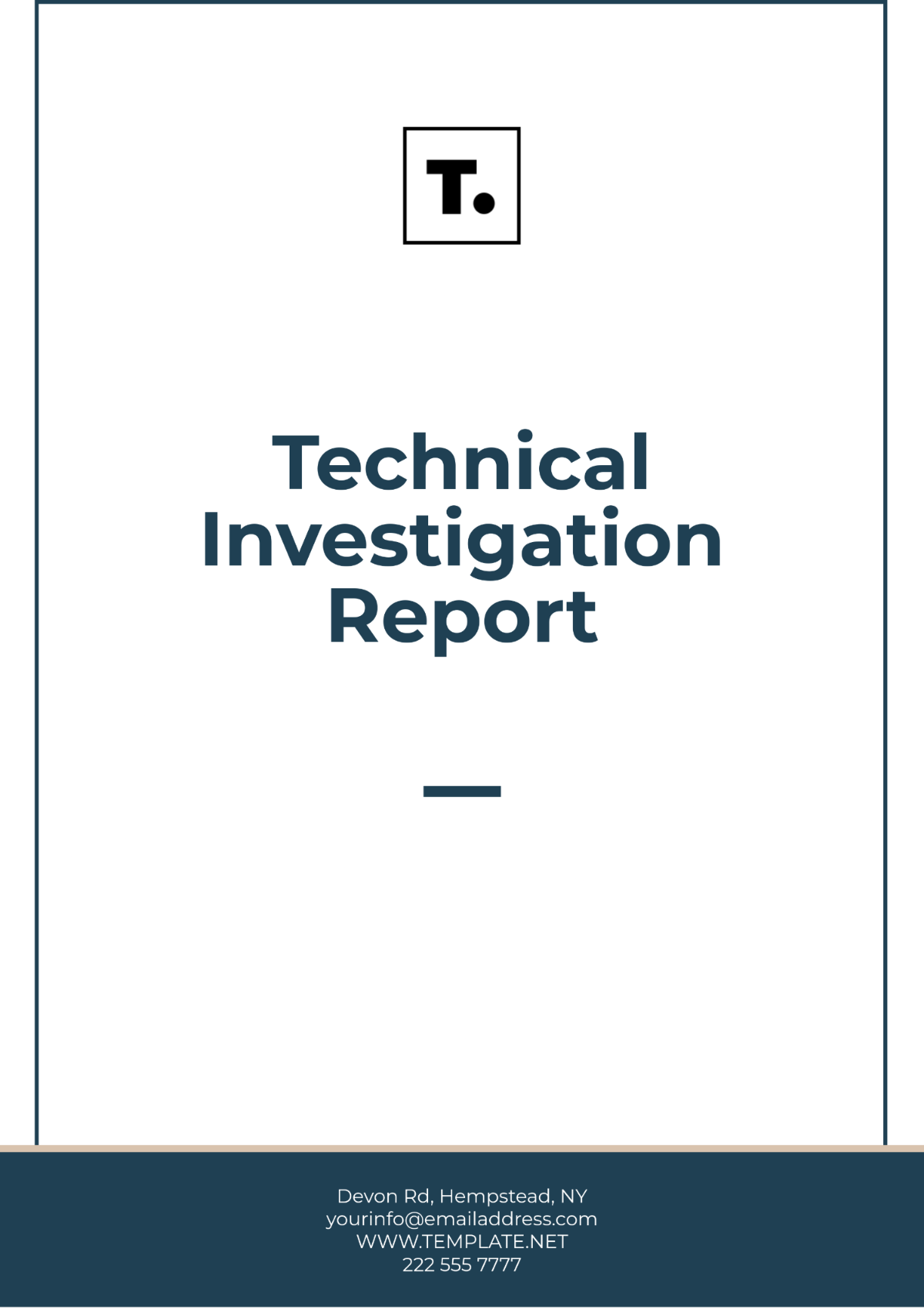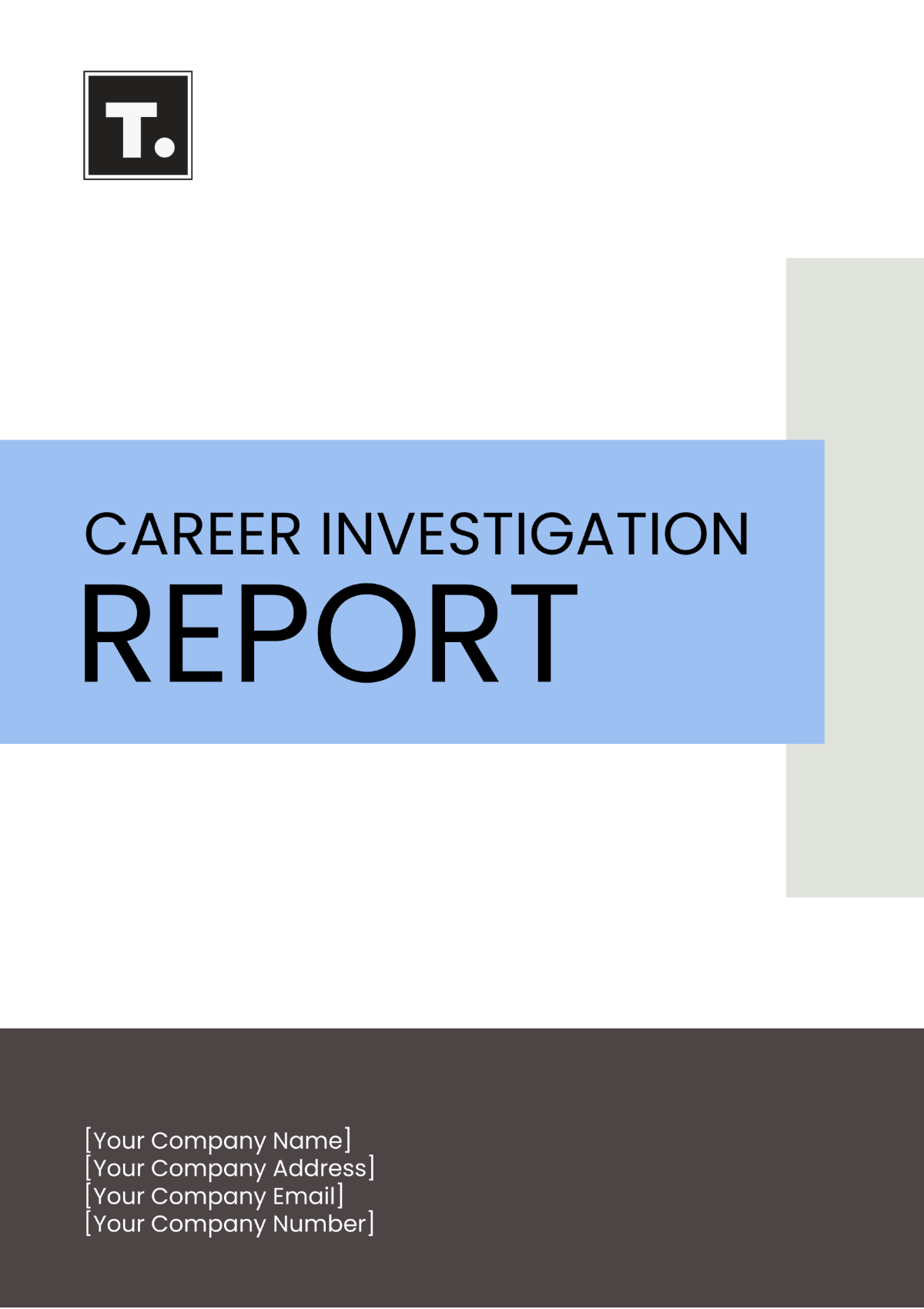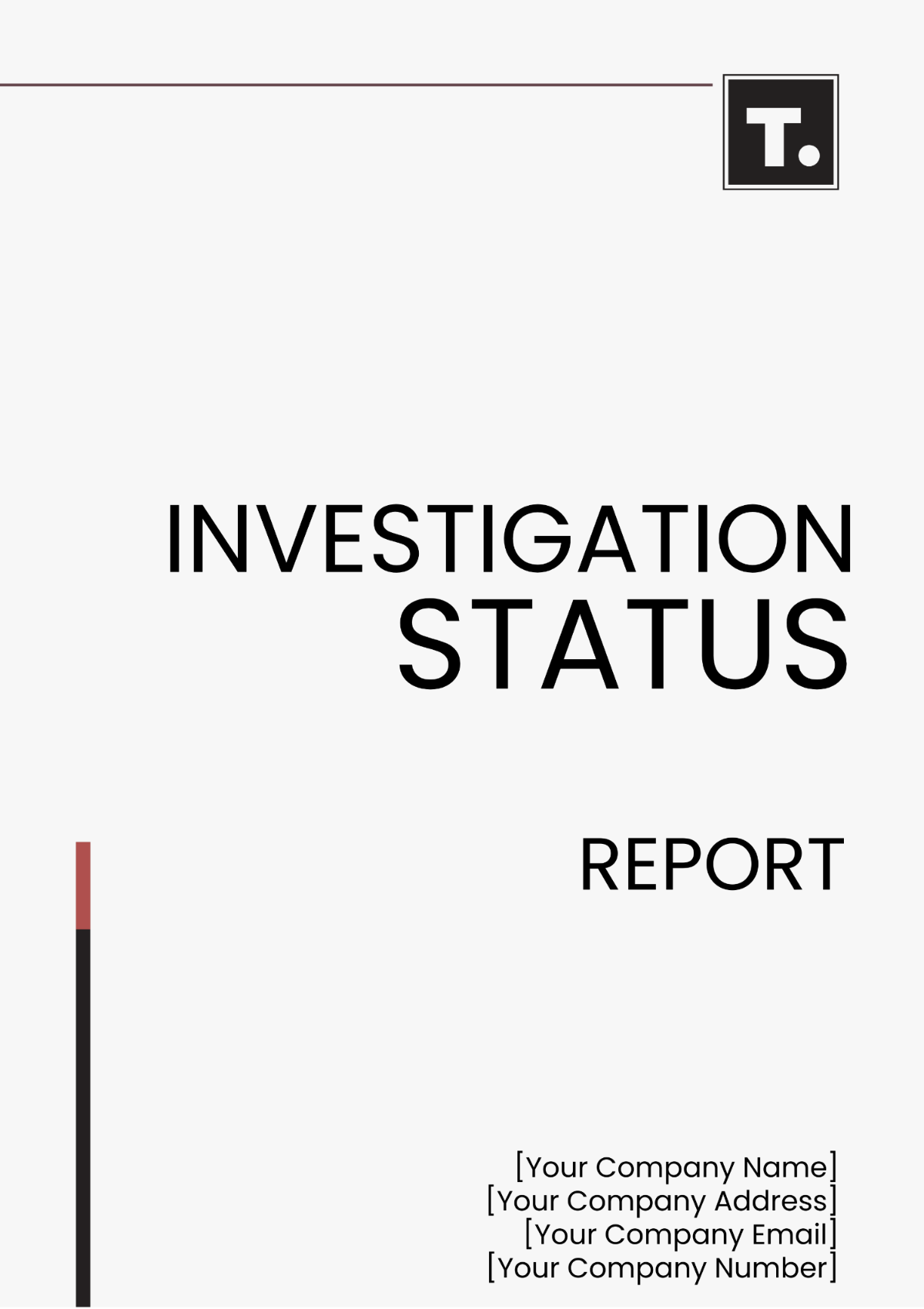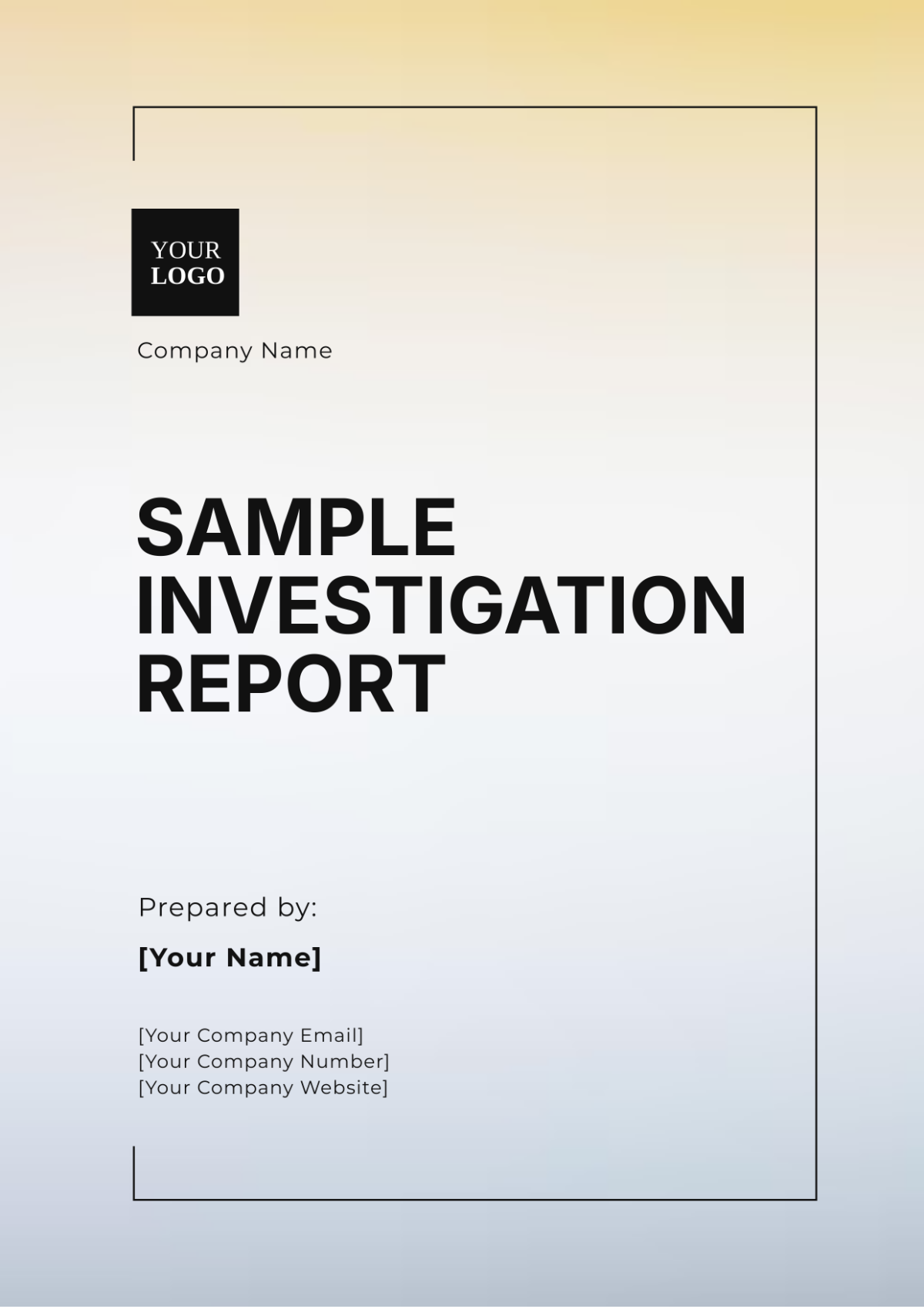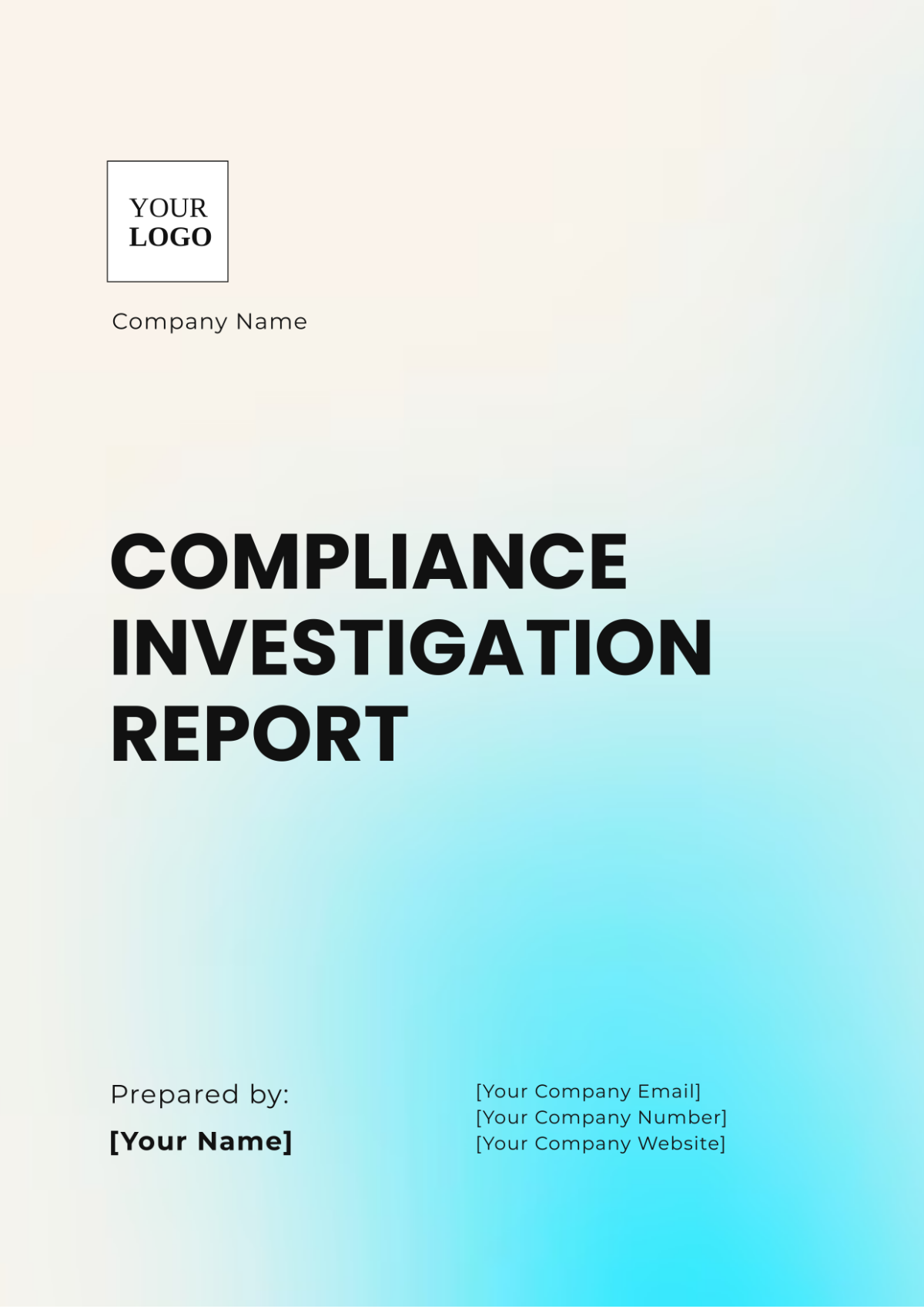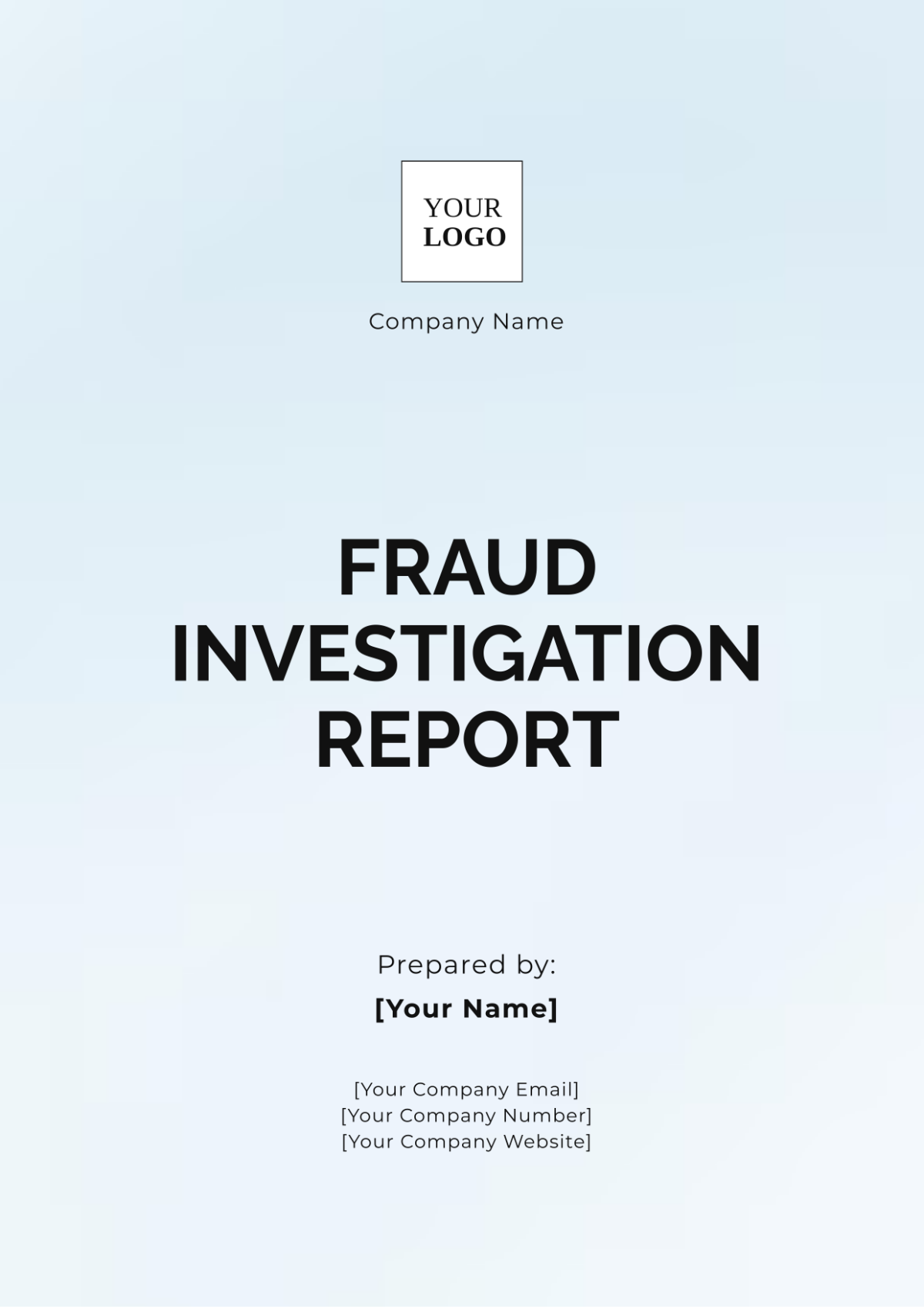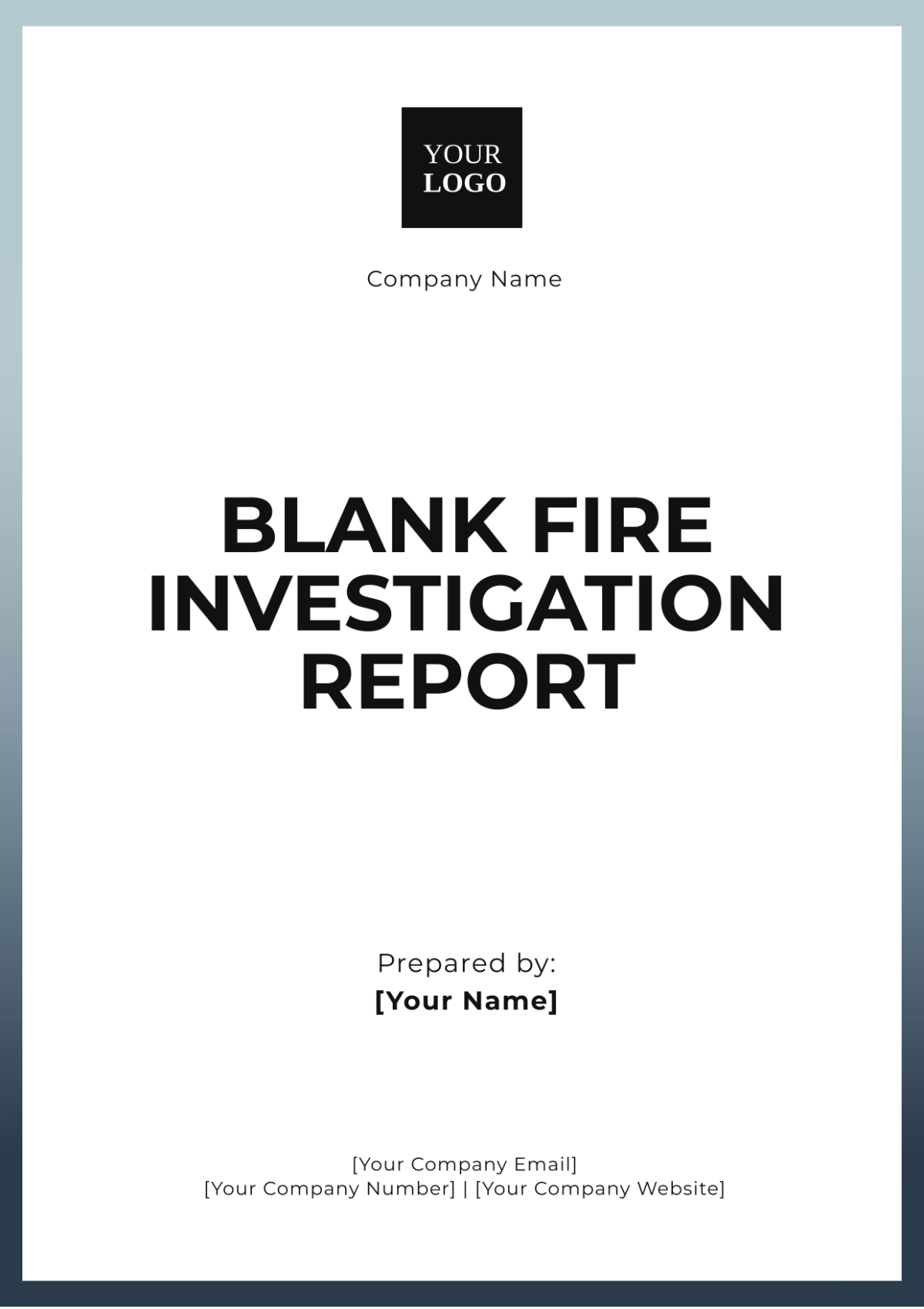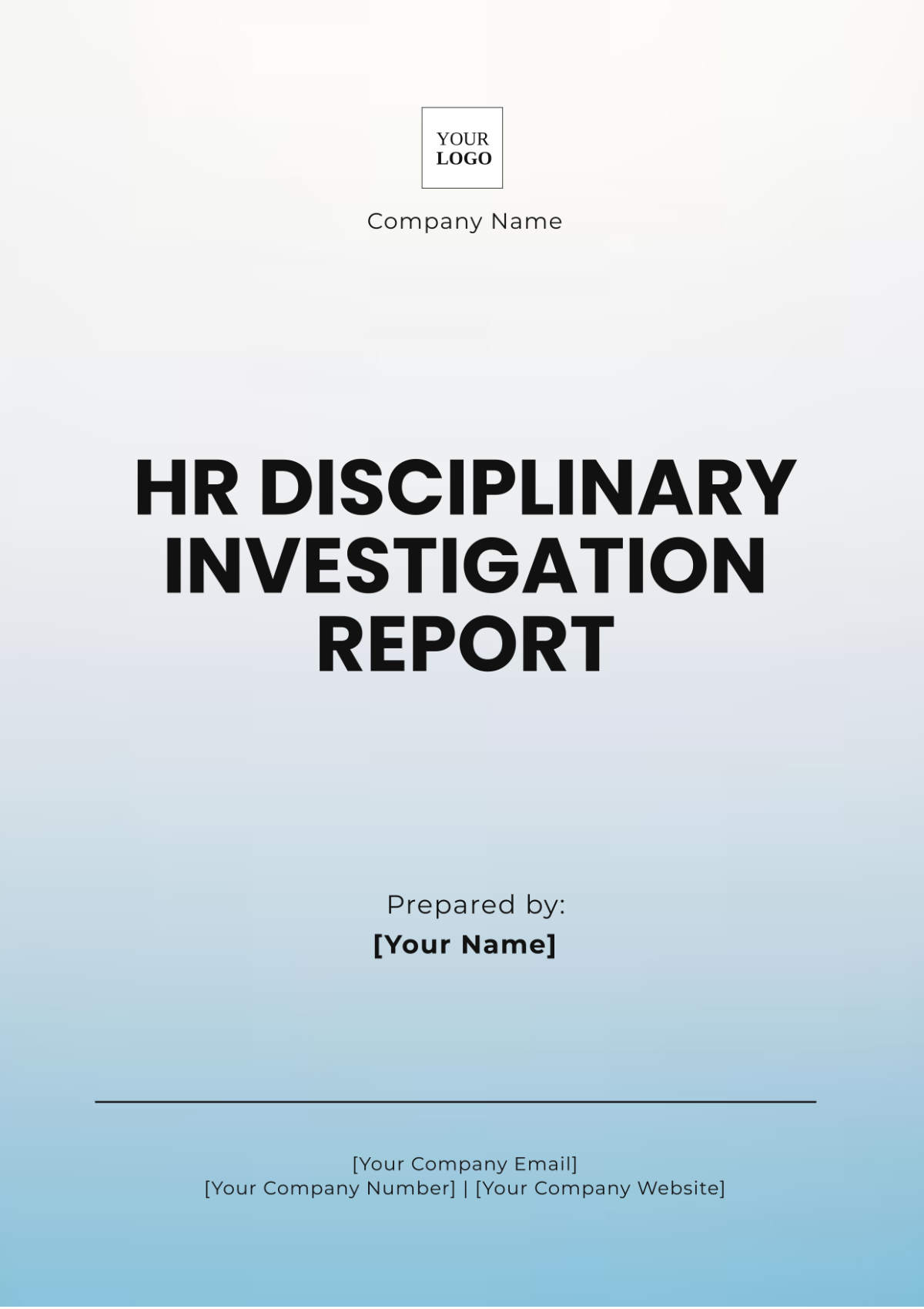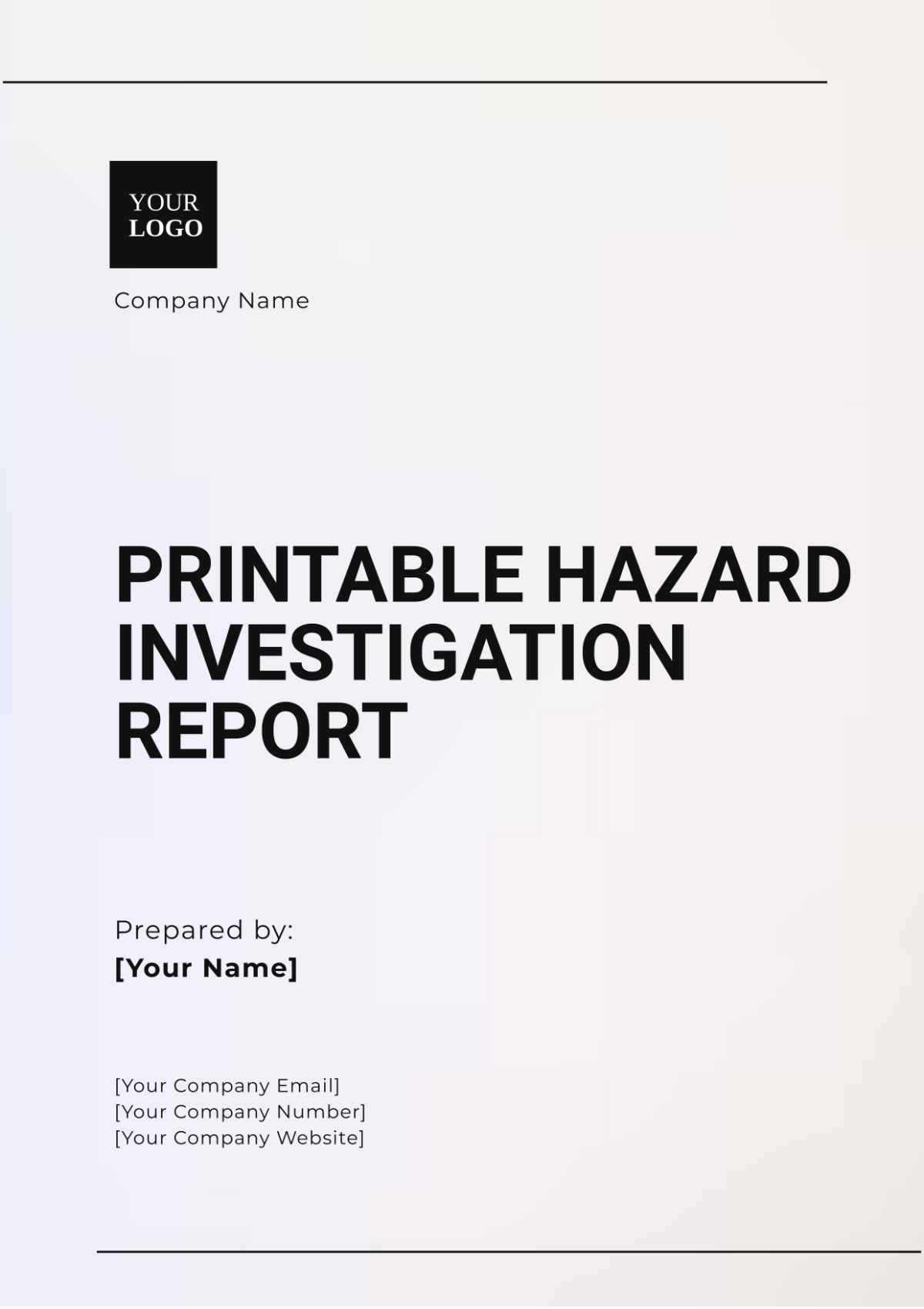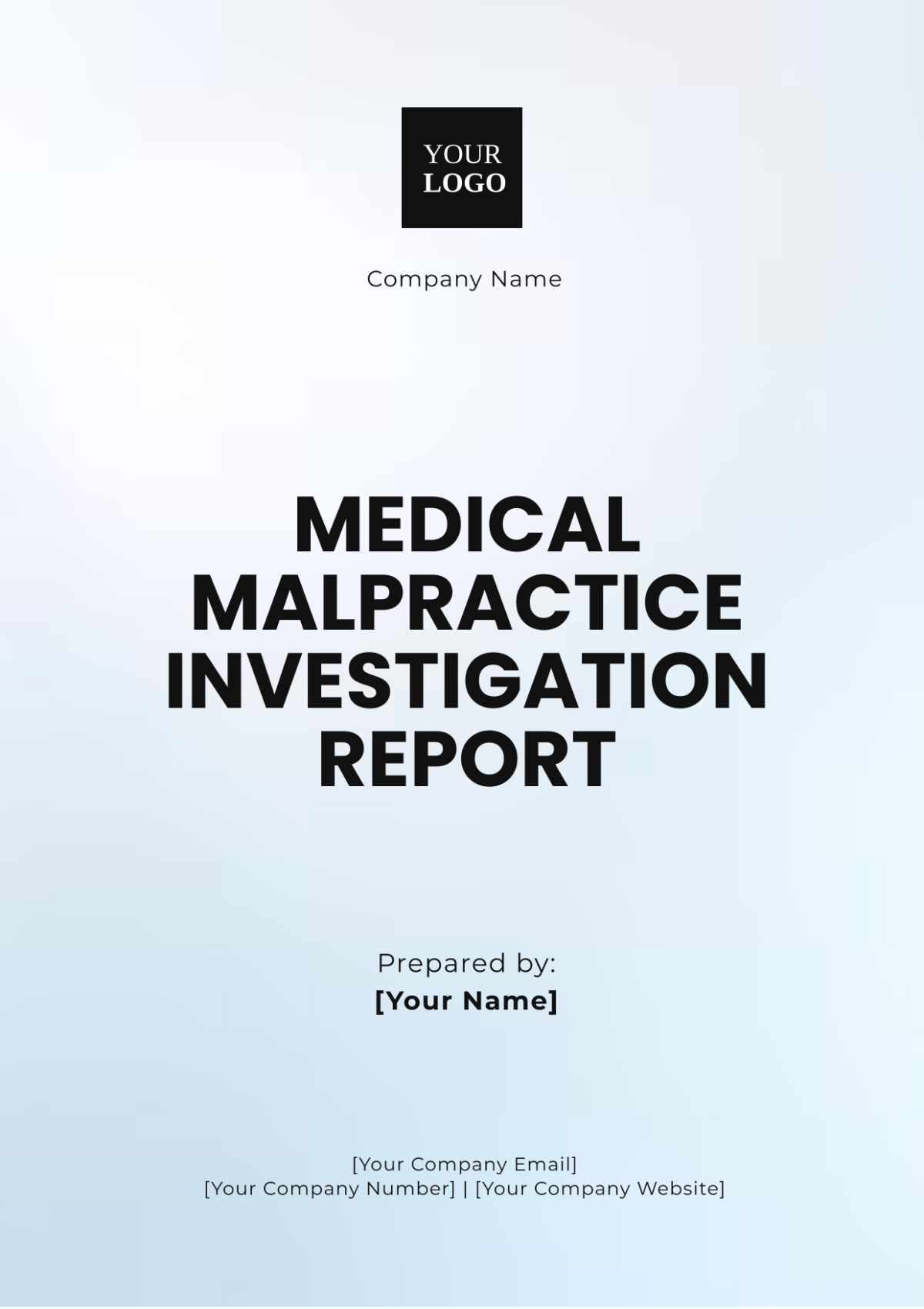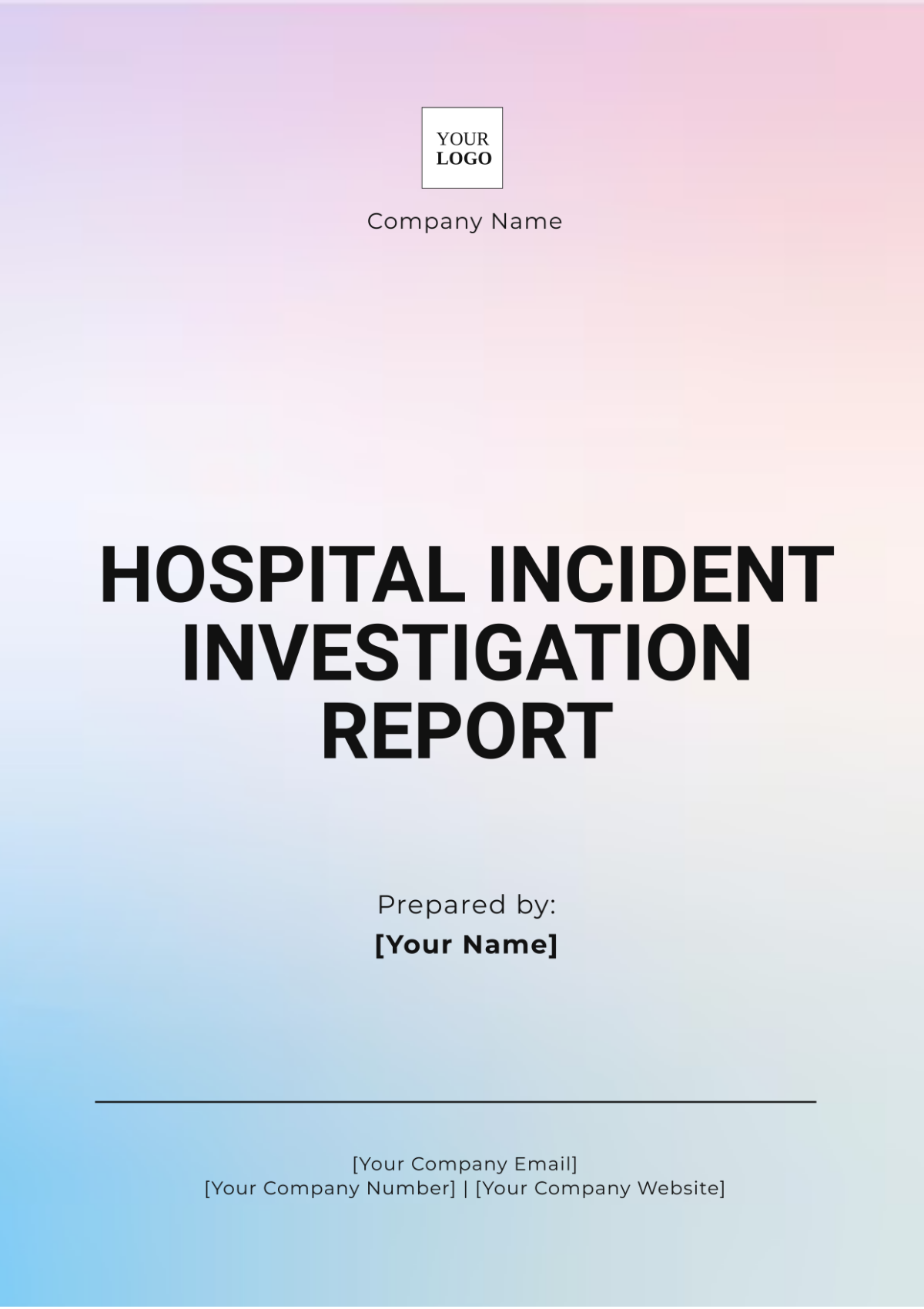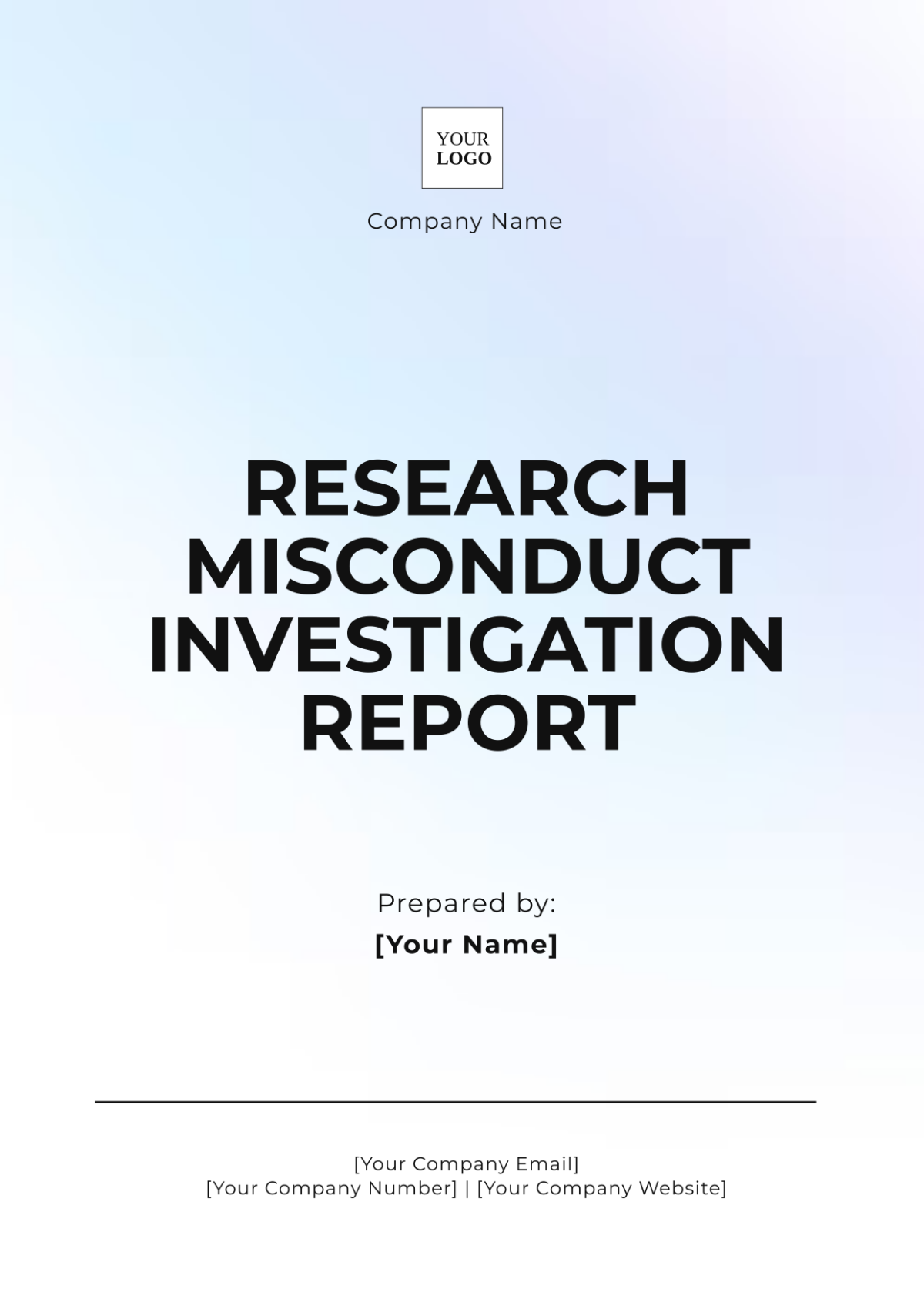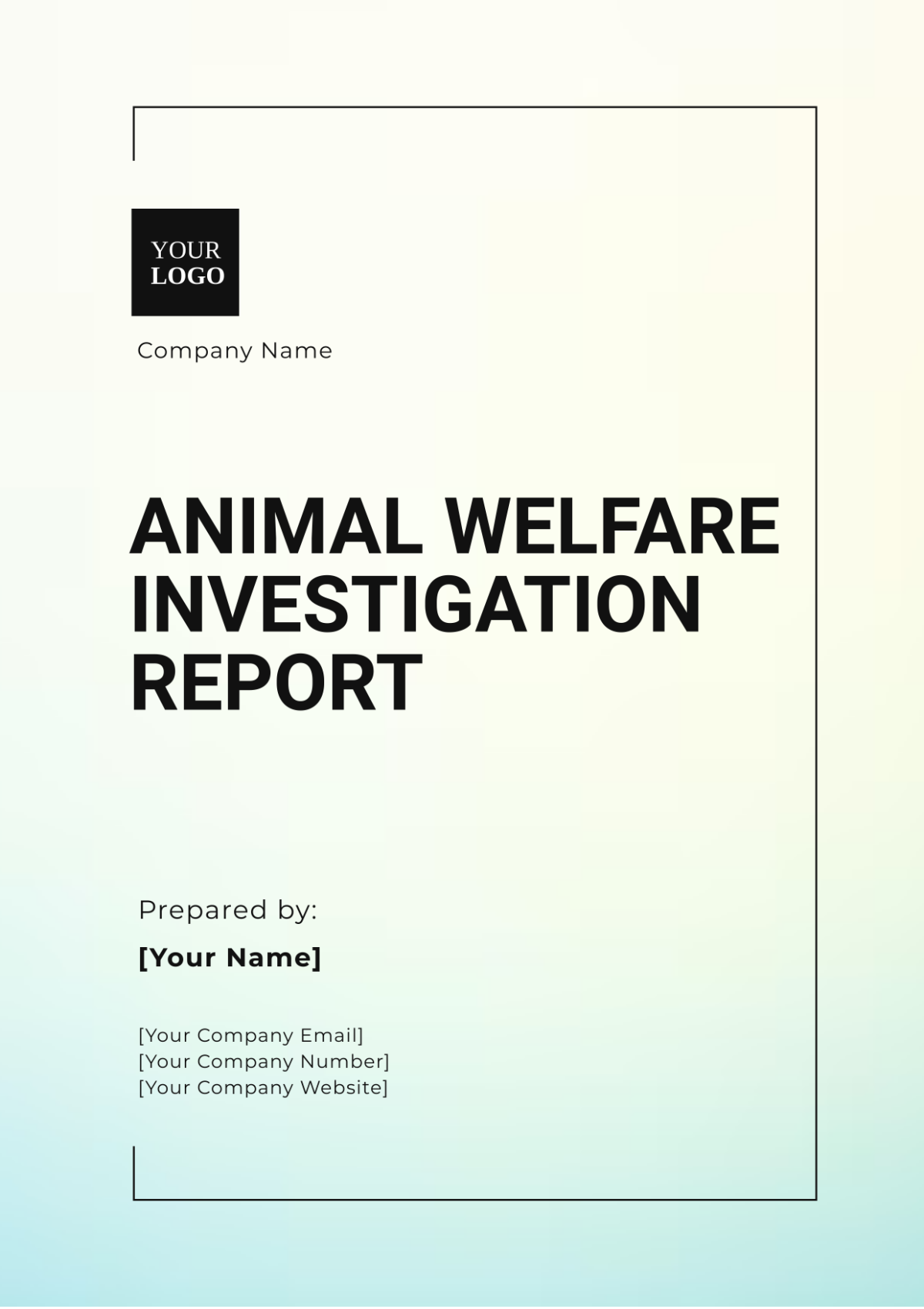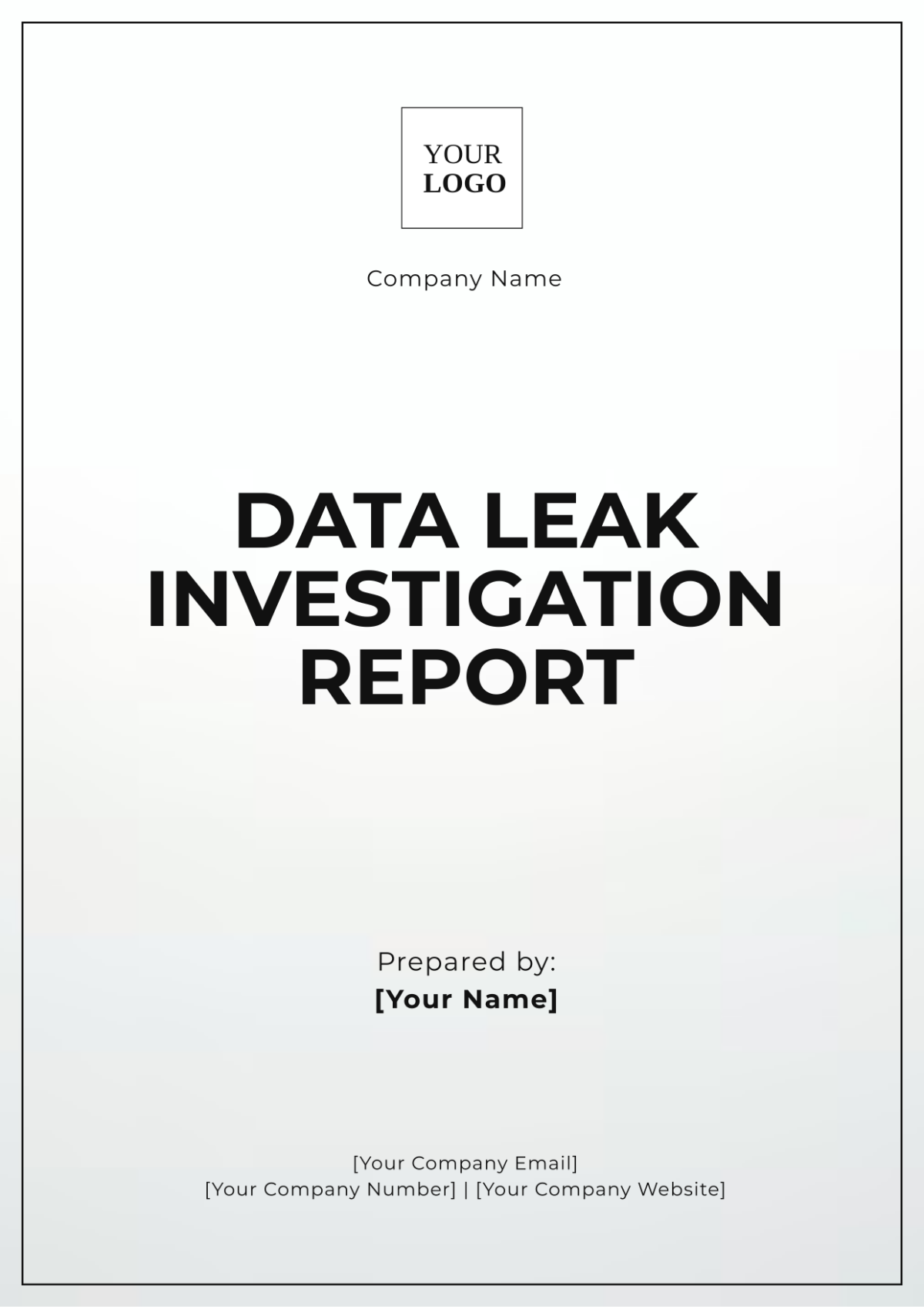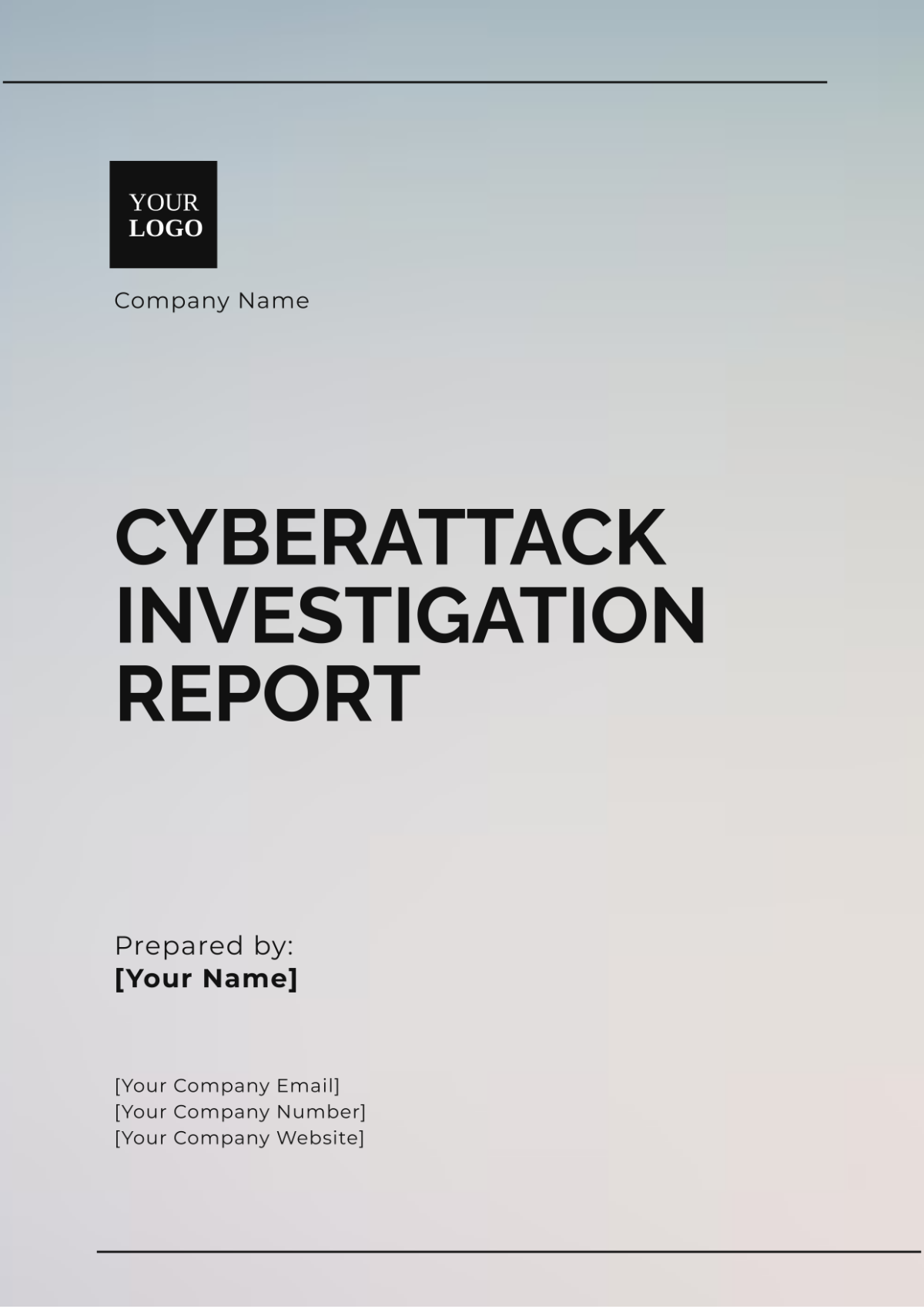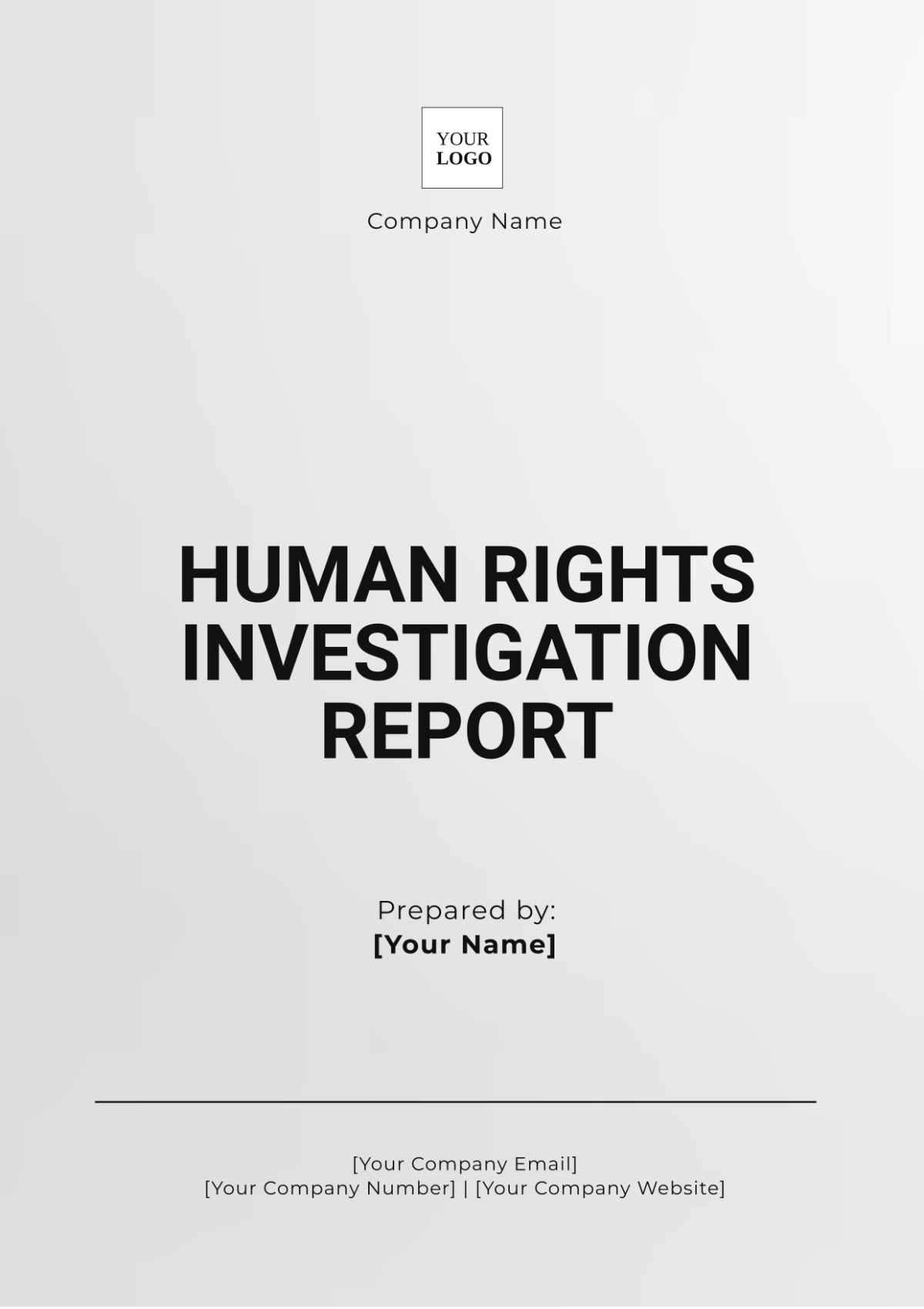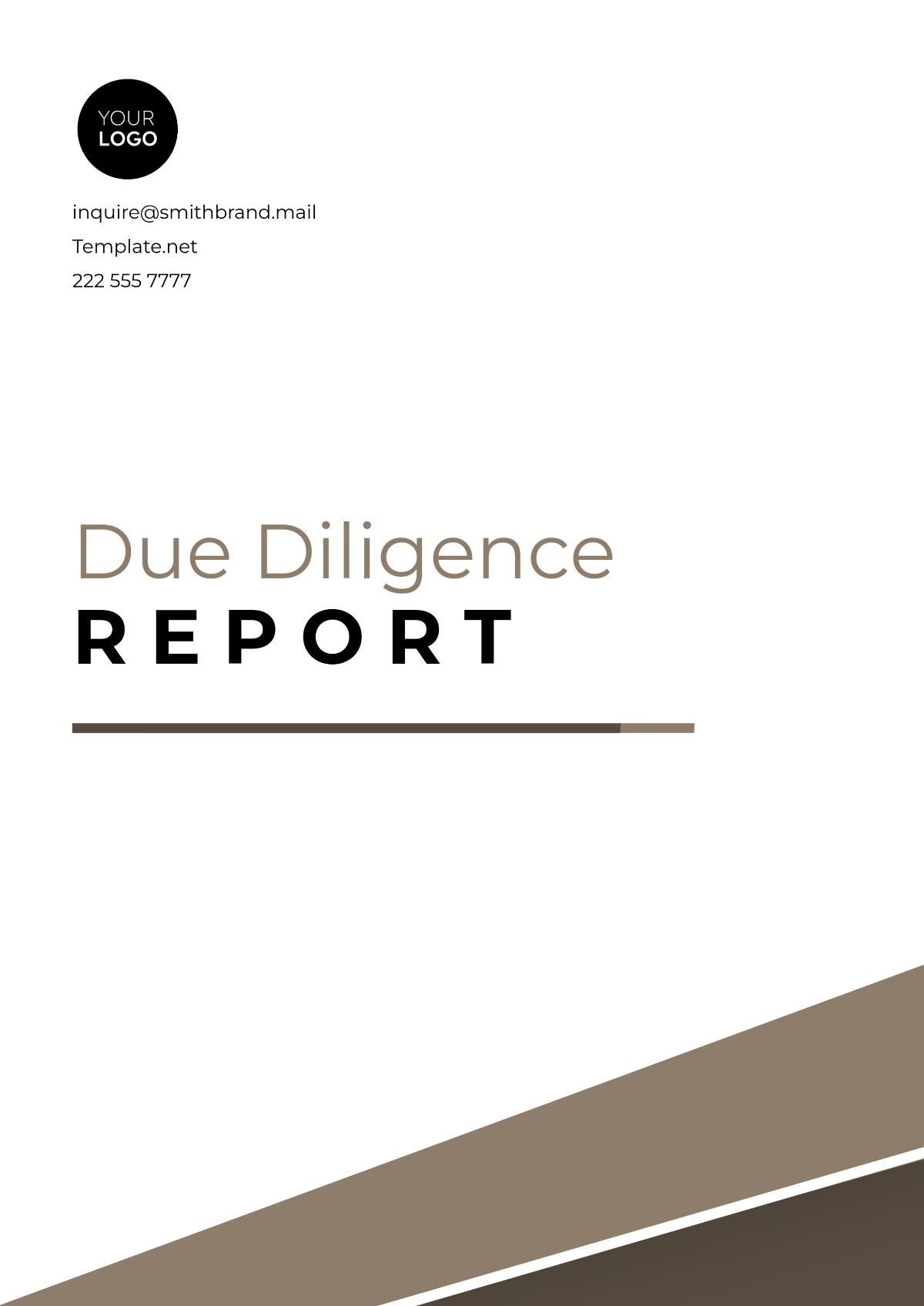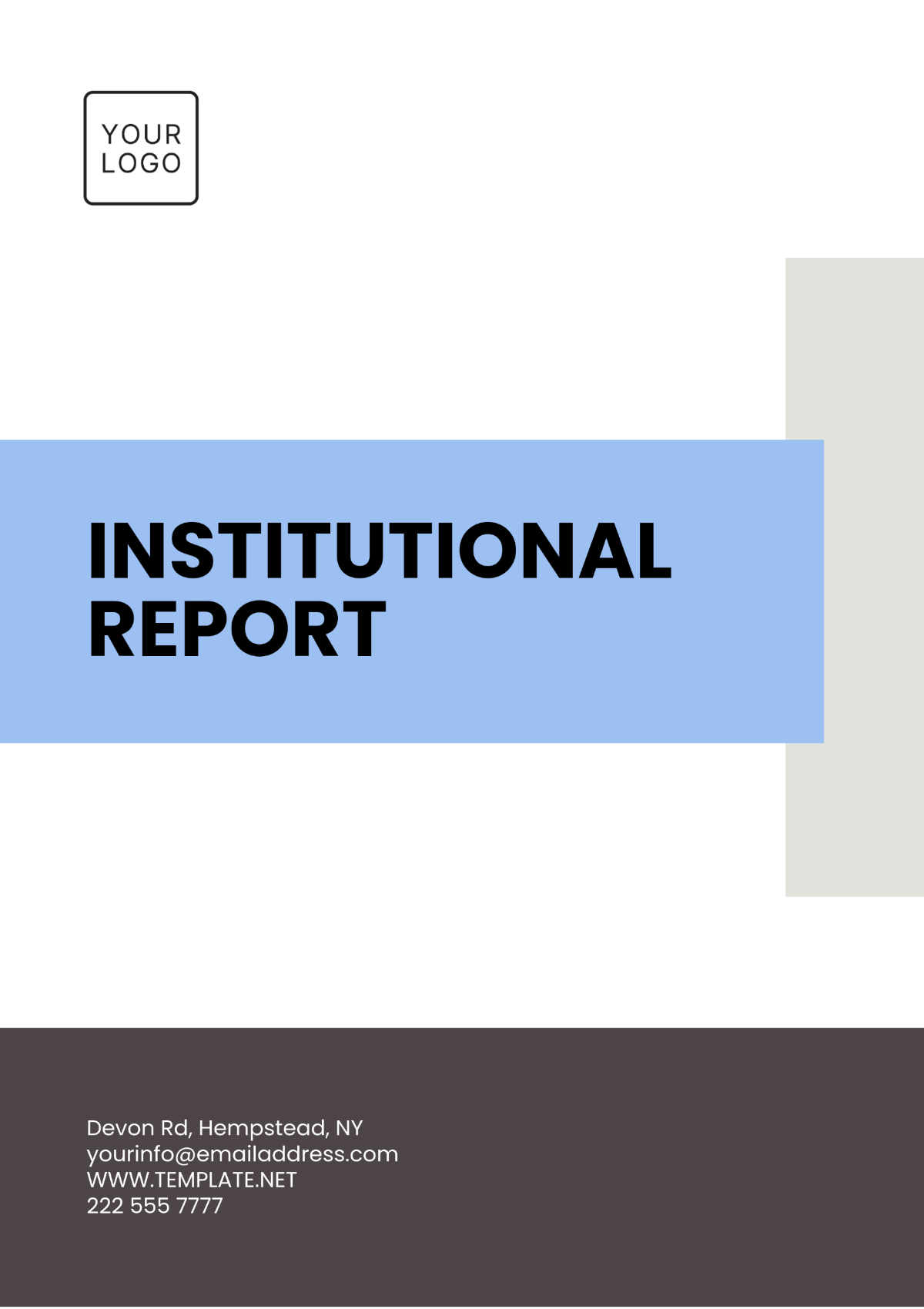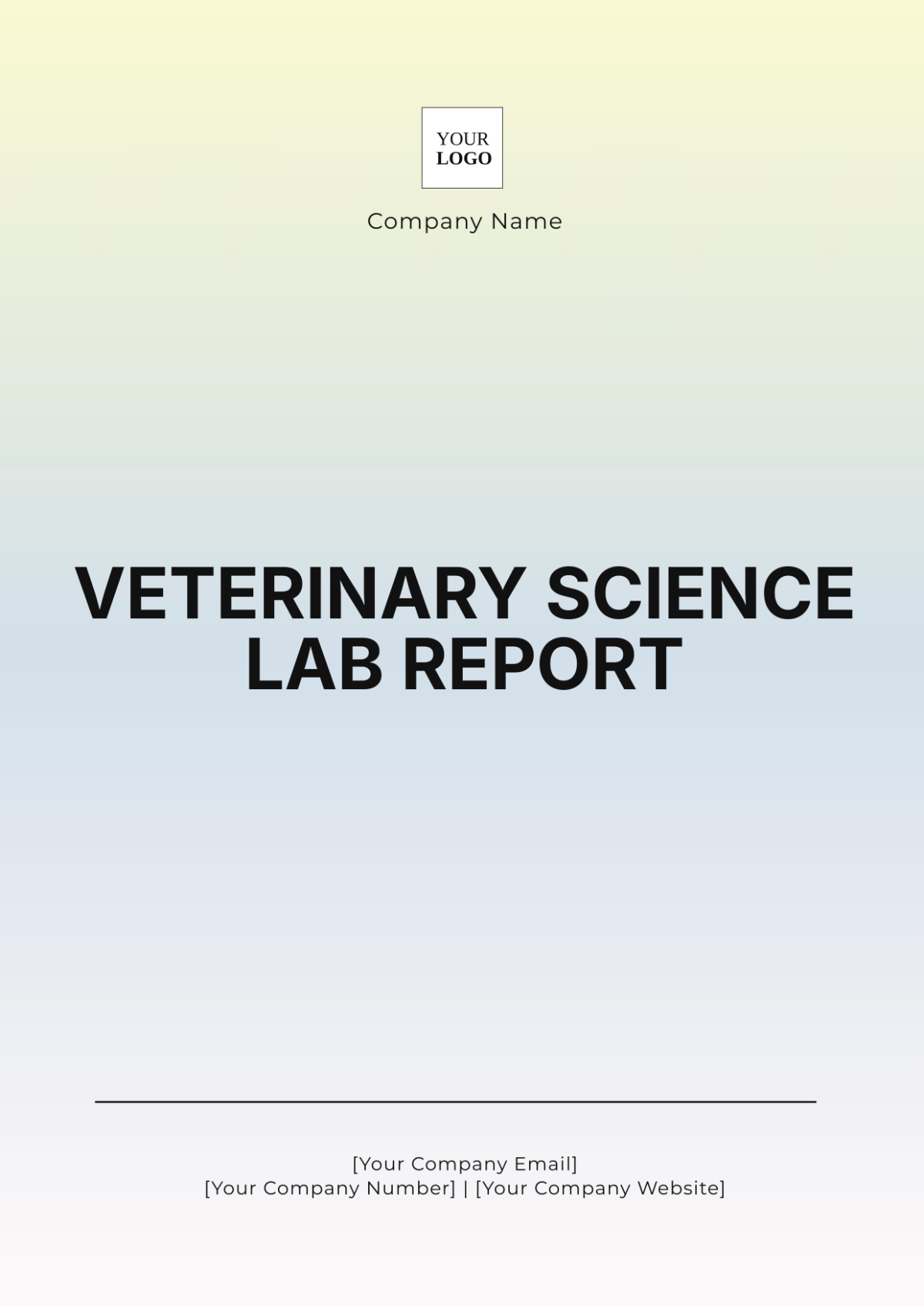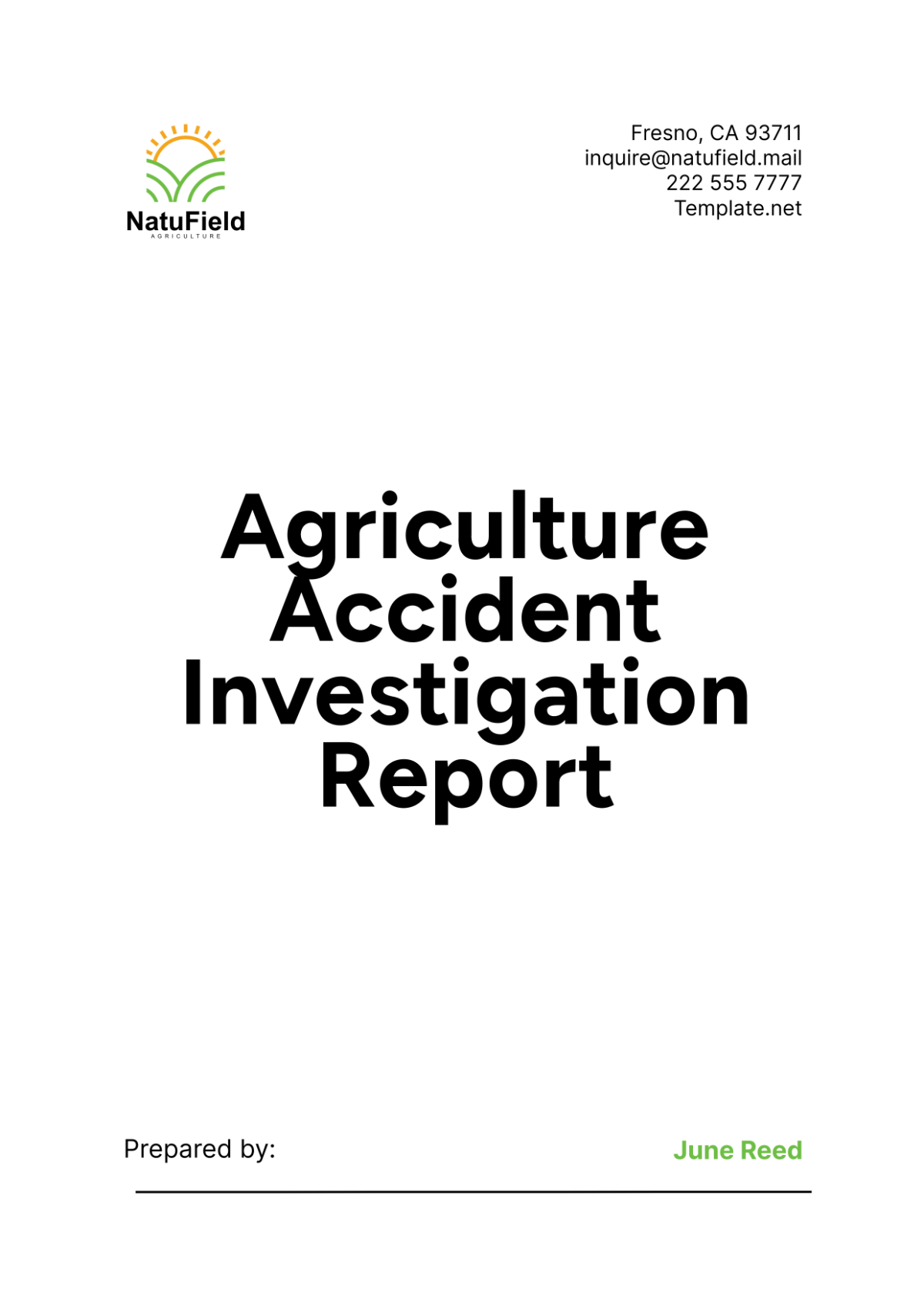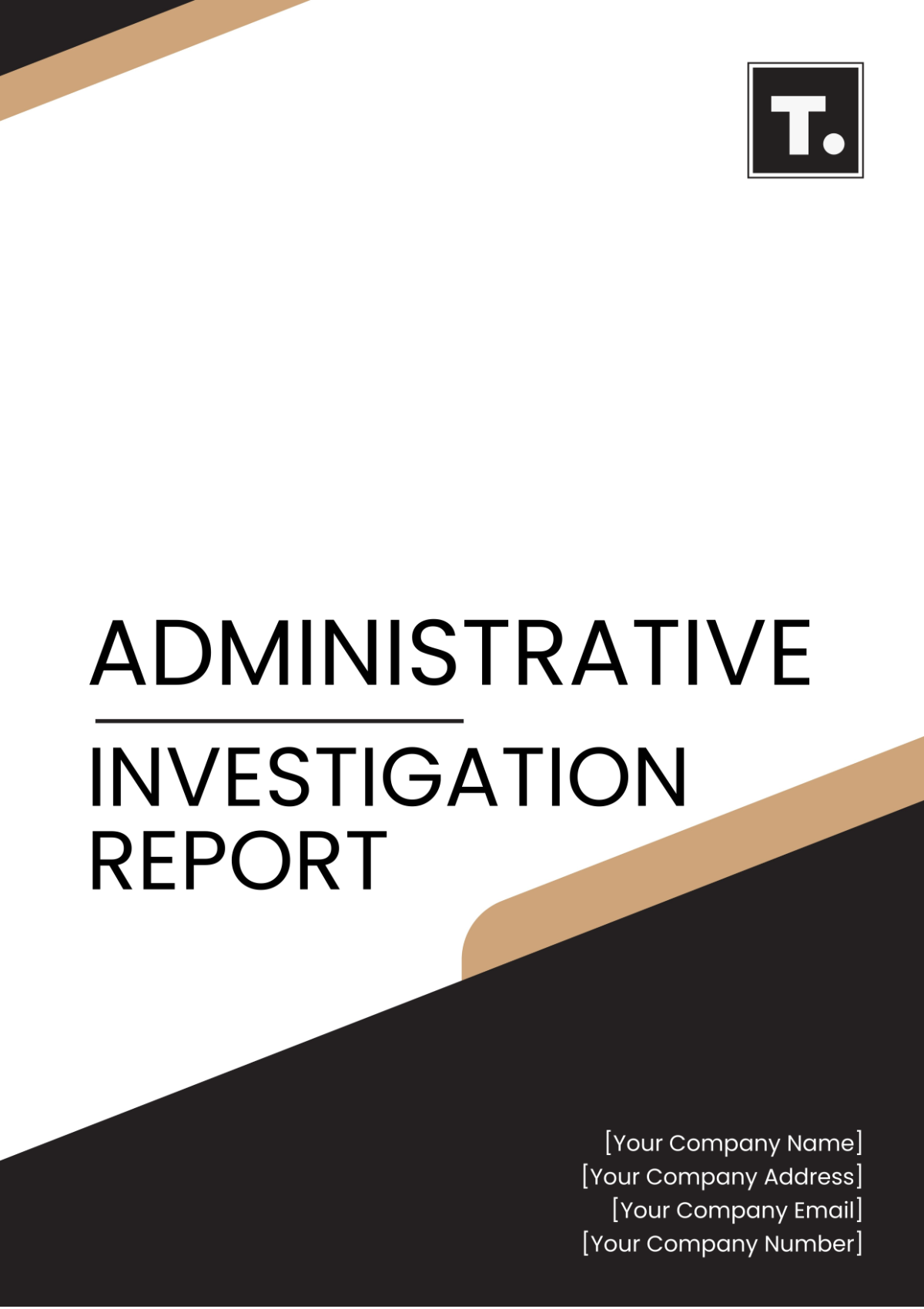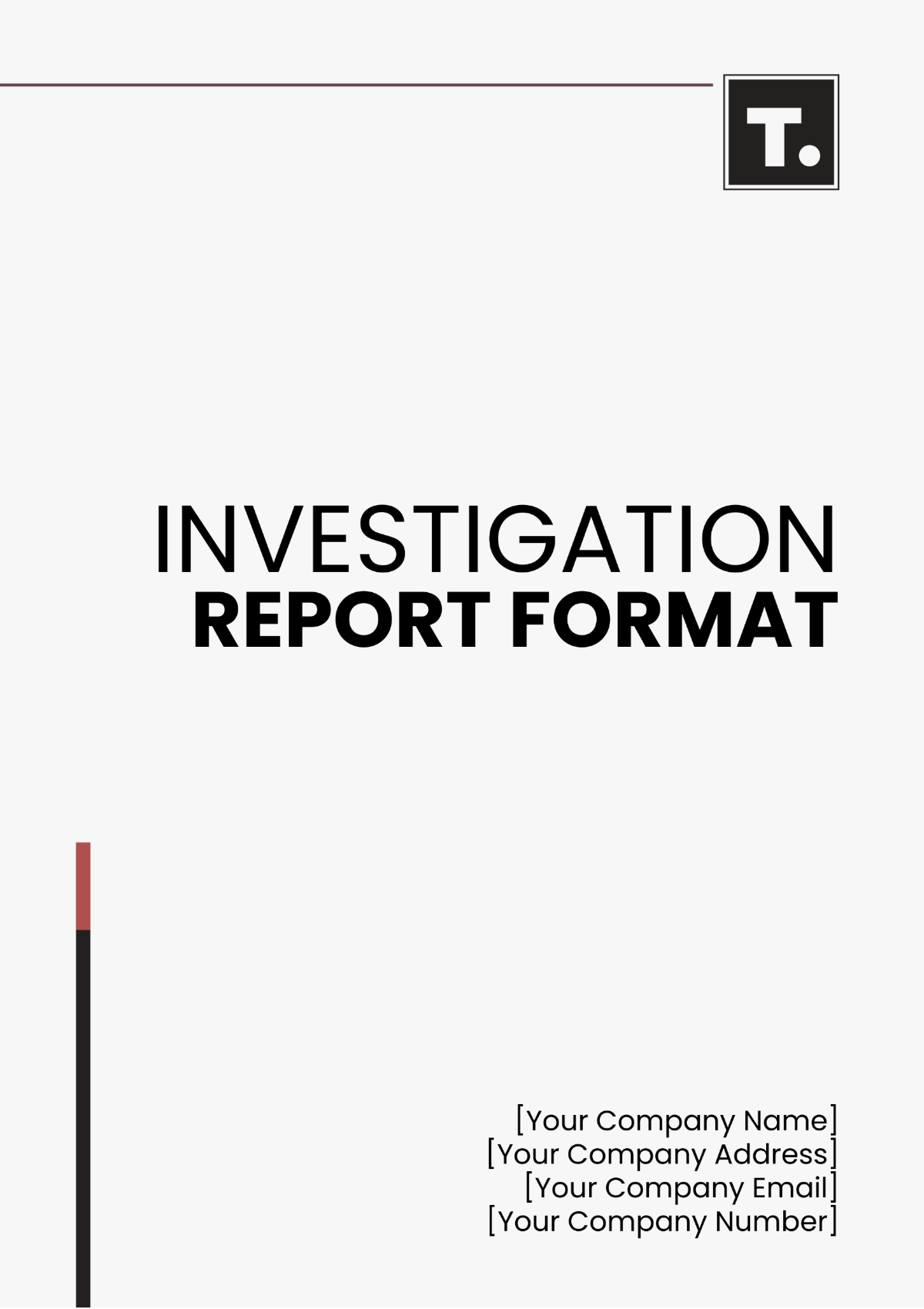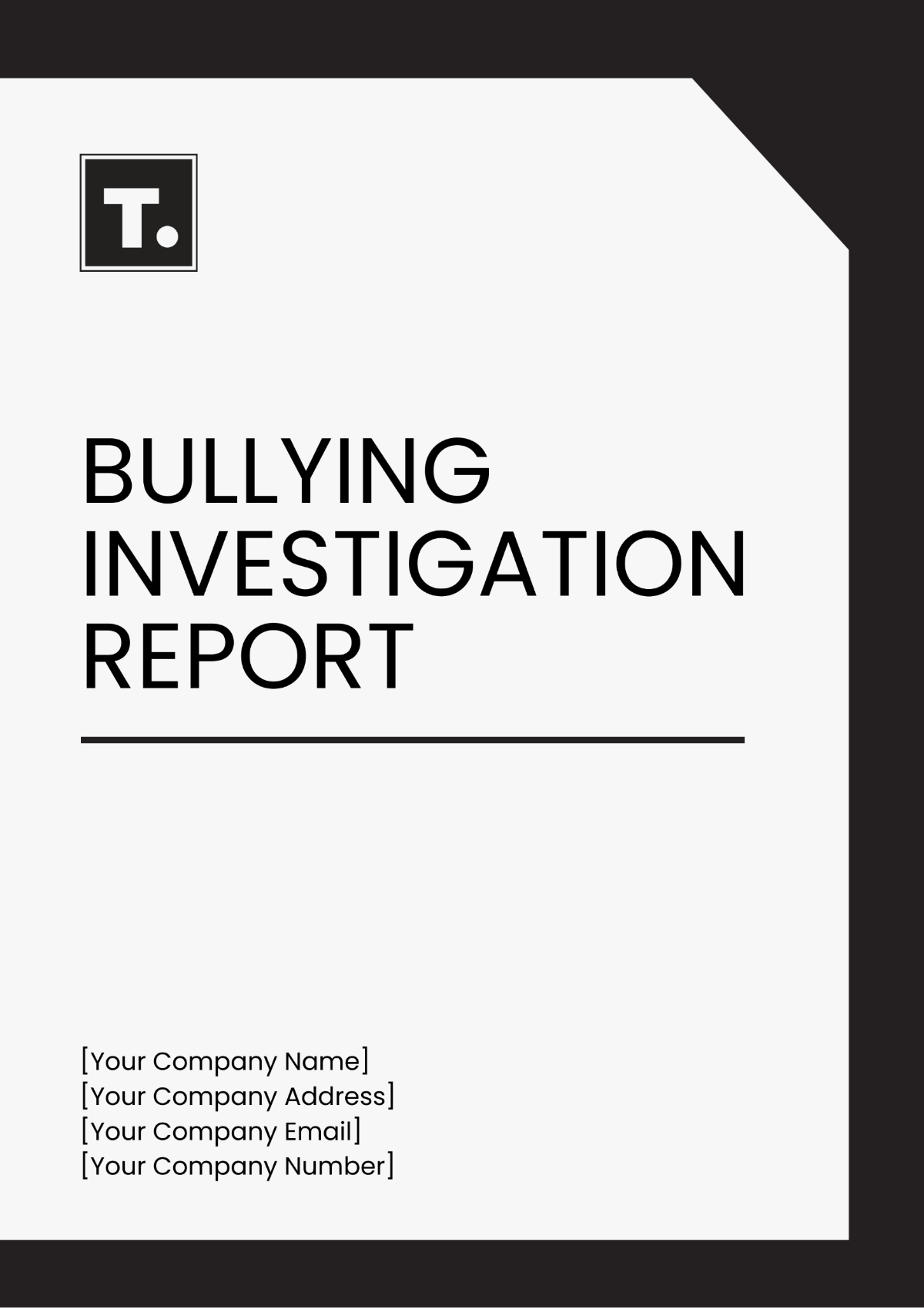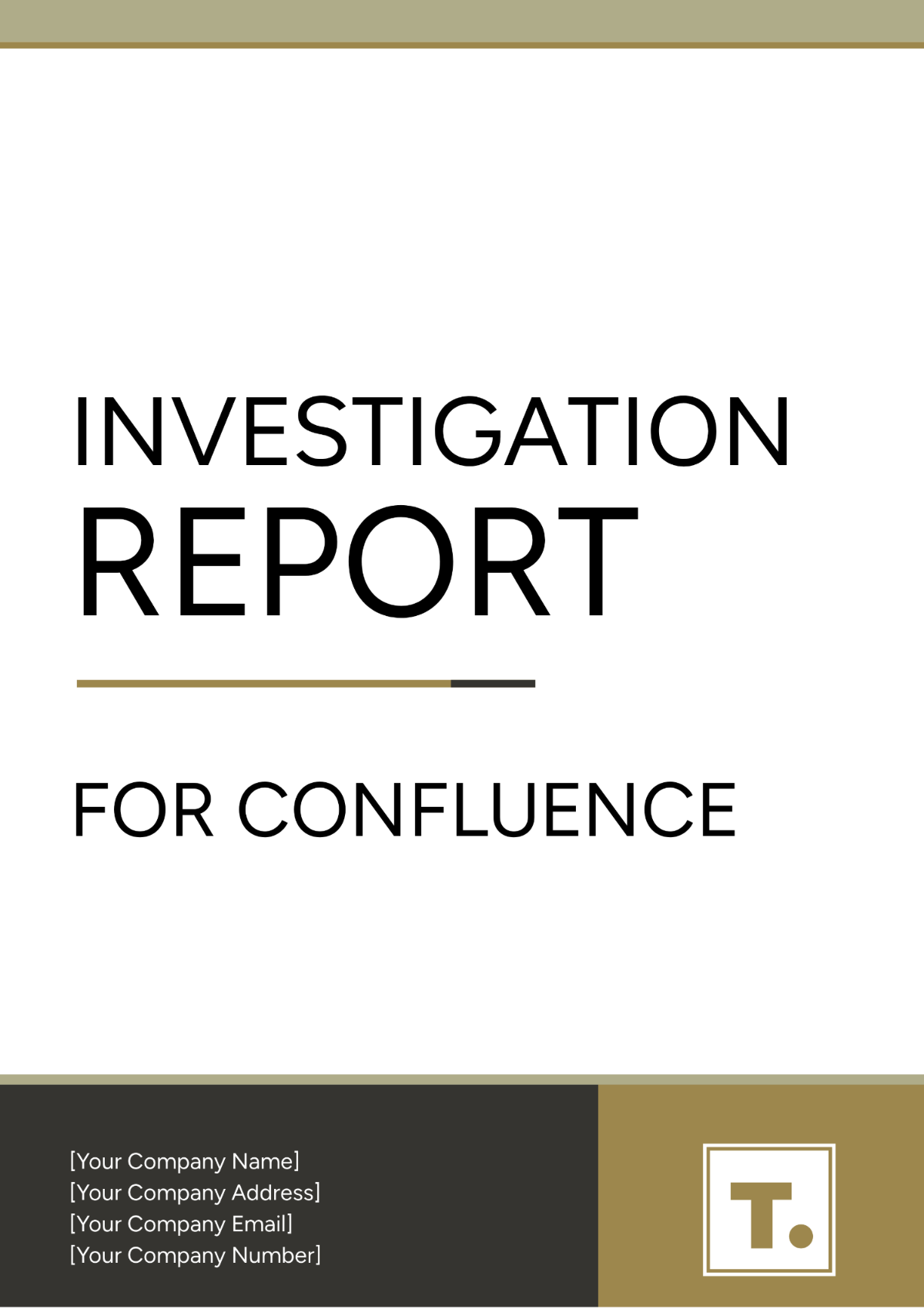Spa Investigation Report
I. Executive Summary
A. Purpose of the Investigation
The primary objective of this investigation was to conduct a thorough assessment of the spa facilities operated by [Your Company Name]. This was undertaken to ensure that the spa adheres to the highest standards of hygiene, safety, and service quality. The investigation aimed to identify any potential areas for improvement and to recommend actionable steps to enhance overall operational efficiency and customer satisfaction.
B. Scope of the Investigation
The scope of the investigation encompassed all aspects of spa operations, including the physical environment, treatment areas, sanitation facilities, and employee practices. The inspection was conducted over a month-long period, from January 1, 2050, to January 31, 2050, covering both peak and off-peak hours to provide a comprehensive evaluation.
C. Summary of Findings
The investigation revealed that the spa generally maintained high standards of cleanliness and hygiene. However, inconsistencies in equipment sterilization and occasional scheduling conflicts were noted. Despite these issues, customer feedback was overwhelmingly positive, indicating a high level of satisfaction with the services provided.
D. Recommendations
To address the identified issues, it is recommended that [Your Company Name] implements immediate improvements in equipment sterilization procedures and enhances staff training programs. Long-term strategies should focus on optimizing operational efficiency, such as upgrading the booking system and improving staff scheduling practices. Continuous monitoring and periodic reviews are essential to maintain and improve service standards.
II. Introduction
A. Background
[Your Company Name] operates a full-service spa offering a wide range of treatments, including massages, facials, body treatments, and wellness therapies. The spa is committed to providing a relaxing and rejuvenating experience for its clients. To uphold this commitment, regular investigations are conducted to ensure that the spa adheres to the highest standards of hygiene, safety, and service quality.
B. Objectives
The main objectives of this investigation were to:
Evaluate the cleanliness and hygiene standards of the spa.
Assess the effectiveness and safety of the equipment and products used.
Gather customer feedback on service quality.
Analyze the operational efficiency of the spa.
Identify areas for improvement and provide actionable recommendations.
C. Methodology
The investigation employed a multi-method approach, combining qualitative and quantitative data collection methods. On-site inspections were conducted to assess the physical environment and operational practices. Customer surveys were distributed to gather feedback on service quality and satisfaction. Staff interviews were conducted to understand employee practices and identify training needs. Maintenance logs and training records were reviewed to evaluate equipment condition and staff competencies.
III. Investigation Details
A. Inspection Overview
The inspection process was carried out over four weeks, with a focus on different areas of the spa each week. Inspections were conducted during both peak and off-peak hours to obtain a comprehensive understanding of the spa's operations. The inspection team included health and safety experts, spa management consultants, and industry specialists.
B. Areas of Inspection
1. Reception Area
The reception area serves as the first point of contact for clients. It was evaluated for cleanliness, organization, and customer service efficiency. Specific aspects inspected included the handling of customer inquiries, the booking process, and the overall ambiance of the reception area.
2. Treatment Rooms
Treatment rooms were inspected for hygiene, comfort, and equipment maintenance. Key focus areas included the cleanliness of linens, the sterility of tools and equipment, and the overall comfort and ambiance of the treatment rooms. The inspection team also assessed the availability and condition of essential supplies.
3. Sanitation Facilities
Sanitation facilities, including bathrooms and changing rooms, were assessed for cleanliness and the availability of necessary hygiene supplies. The inspection team checked for the presence of soap, hand sanitizers, and clean towels. The condition of fixtures and the overall maintenance of these facilities were also evaluated.
4. Employee Practices
Employee practices were observed to ensure compliance with hygiene protocols and customer service standards. This included monitoring handwashing practices, the proper use of personal protective equipment (PPE), and adherence to treatment protocols. Staff interactions with clients were also observed to assess professionalism and customer service skills.
C. Equipment and Products
1. Equipment Inspected
The investigation included a thorough assessment of all major equipment used in treatments. This included massage tables, facial machines, sterilization units, and other treatment-specific equipment. Each piece of equipment was evaluated for functionality, maintenance status, and compliance with health and safety standards.
Equipment Type | Quantity | Condition | Last Maintenance Date | Maintenance Frequency |
|---|---|---|---|---|
Massage Tables | 10 | Good | January 15, 2050 | Monthly |
Facial Machines | 5 | Excellent | January 20, 2050 | Bi-monthly |
Sterilization Units | 3 | Satisfactory | January 10, 2050 | Weekly |
Treatment Tools | Various | Good | January 18, 2050 | After Each Use |
2. Products Used
Products used in treatments, including oils, creams, and disinfectants, were reviewed for safety and compliance with health regulations. The inspection team checked expiry dates, storage conditions, and labeling to ensure proper usage. The efficacy and quality of the products were also evaluated based on customer feedback and treatment outcomes.
Product Type | Brand | Expiry Date | Storage Condition | Usage Frequency |
|---|---|---|---|---|
Massage Oils | Spa Essentials | December 2051 | Cool, Dry Place | Daily |
Facial Creams | Dermaluxe | March 2052 | Refrigerated | Daily |
Disinfectants | CleanPro | October 2051 | Room Temperature | After Each Use |
Body Scrubs | Natural Bliss | June 2052 | Cool, Dry Place | Weekly |
IV. Findings
A. Health and Safety Compliance
1. General Cleanliness
The spa generally maintained high levels of cleanliness. Floors, surfaces, and treatment areas were clean and well-maintained. However, occasional lapses were noted, particularly during peak hours when cleaning schedules were disrupted. It was observed that some high-touch areas, such as door handles and reception desks, required more frequent cleaning.
2. Equipment Sterilization
Equipment sterilization procedures were found to be inconsistent. While some equipment was properly sterilized, there were instances where sterilization protocols were not fully followed. This poses a risk of cross-contamination and could impact client safety. It was recommended that staff receive additional training on proper sterilization techniques and that regular audits be conducted to ensure compliance.
3. Product Safety
All products used were found to be within their expiry dates and stored correctly. However, some products lacked clear labeling, which could lead to confusion among staff and potential misuse. It was recommended that all products be clearly labeled with usage instructions and expiry dates to prevent any misuse and ensure client safety.
B. Service Quality
1. Customer Feedback
Customer feedback was generally positive, with a 92% satisfaction rate reported through surveys. Common praises included the professionalism of staff and the quality of treatments. However, 8% of customers reported delays in appointments and scheduling issues. The feedback highlighted the need for improvements in appointment management to enhance customer experience.
Metric | Percentage (%) |
|---|---|
Overall Satisfaction | 92 |
Appointment Delays | 8 |
Staff Professionalism | 95 |
Treatment Quality | 90 |
Facility Cleanliness | 88 |
Equipment Sterilization | 85 |
2. Treatment Effectiveness
Treatment effectiveness was rated highly, with 90% of customers reporting significant improvement in their conditions post-treatment. This indicates a high level of service quality and expertise among staff. The feedback suggested that customers found the treatments to be both relaxing and effective in addressing their specific concerns.
3. Staff Professionalism
Staff were consistently praised for their professionalism and friendliness. Training records indicated that all staff had received adequate training, although ongoing education in the latest techniques and customer service practices was recommended. The professionalism of the staff played a significant role in enhancing customer satisfaction and repeat business.
C. Operational Efficiency
1. Appointment Management
Appointment management was identified as an area needing improvement. Delays and scheduling conflicts were reported, particularly during peak times. Implementing a more robust booking system could alleviate these issues. A recommendation was made to explore software solutions that offer real-time booking and automatic scheduling adjustments.
2. Staff Scheduling
Staff scheduling was generally effective, but there were occasional overlaps and understaffing during peak hours. Better scheduling practices and perhaps hiring additional staff during busy periods could improve efficiency. It was suggested to use data analytics to predict peak times and optimize staff allocation accordingly.
3. Resource Utilization
Resource utilization was found to be efficient overall. However, there was some wastage noted in the use of disposable items such as towels and gloves. Implementing stricter inventory controls could help reduce waste. A recommendation was made to track usage patterns and adjust orders to better match actual needs.
V. Analysis
A. Compliance with Industry Standards
The spa was found to be largely compliant with industry standards, particularly in terms of hygiene and customer service. However, improvements are needed in equipment sterilization and operational efficiency to fully meet the highest standards. Regular audits and continuous training are essential to maintain compliance.
B. Comparison with Competitors
Compared to competitors, [Your Company Name]'s spa ranked highly in customer satisfaction and treatment effectiveness. However, competitors had more efficient appointment management systems and better equipment sterilization practices. It was recommended to benchmark against top-performing competitors and adopt best practices to enhance service delivery.
C. Impact on Customer Satisfaction
The identified issues, while not severely impacting customer satisfaction, do pose potential risks if not addressed. Ensuring consistent equipment sterilization and improving appointment management will likely enhance overall customer experience. Continuous improvement in these areas is crucial for maintaining a competitive edge.
VI. Recommendations
A. Immediate Actions
Enhance Equipment Sterilization: Implement stricter sterilization protocols and regular audits to ensure compliance. Provide additional training for staff on proper sterilization techniques and use visual aids as reminders in treatment rooms.
Improve Appointment Management: Upgrade the booking system to prevent delays and scheduling conflicts. Consider using software that offers features like real-time booking, automated reminders, and feedback collection.
Label Products Clearly: Ensure all products are clearly labeled with usage instructions and expiry dates. Implement a standardized labeling system and conduct regular checks to ensure compliance.
B. Long-Term Strategies
Optimize Staff Scheduling: Use data-driven scheduling tools to better match staff availability with peak times. Analyze historical data to predict busy periods and adjust staffing levels accordingly.
Implement Ongoing Training Programs: Regularly update staff on the latest industry techniques and customer service practices. Provide continuous education opportunities and encourage staff to attend industry conferences and workshops.
Enhance Customer Feedback Mechanisms: Introduce more detailed feedback forms to gain deeper insights into customer experiences and areas for improvement. Use feedback to drive continuous improvement initiatives and reward staff for positive reviews.
C. Training and Development
Continuous Education: Provide ongoing training for staff to keep up with the latest spa treatments and hygiene practices. Develop a comprehensive training program that includes both technical skills and soft skills.
Customer Service Workshops: Conduct regular workshops focused on enhancing customer service skills. Include role-playing scenarios and customer service simulations to reinforce learning.
Health and Safety Training: Ensure all staff are trained in the latest health and safety protocols to maintain high standards. Conduct regular refresher courses and update training materials as needed.
VII. Conclusion
A. Summary of Key Points
The investigation revealed that [Your Company Name]'s spa maintains high standards in many areas but has room for improvement in equipment sterilization and operational efficiency. Customer satisfaction is high, indicating strong service quality and professional staff. Immediate actions and long-term strategies have been recommended to address the identified issues and enhance overall service delivery.
B. Final Thoughts
Addressing the identified issues through immediate actions and long-term strategies will help [Your Company Name] enhance its spa services and maintain a competitive edge in the industry. Continuous improvement and adherence to industry standards will ensure the spa remains a trusted and preferred choice for customers. The commitment to excellence demonstrated by [Your Company Name] positions the spa well for future success.
VIII. Appendices
A. Inspection Checklist
Area Inspected | Checklist Items | Status |
|---|---|---|
Reception Area | Cleanliness, Organization, Customer Service | Satisfactory |
Treatment Rooms | Cleanliness, Equipment Sterilization, Comfort | Good |
Sanitation Facilities | Cleanliness, Availability of Supplies | Satisfactory |
Employee Practices | Handwashing, PPE Usage, Treatment Protocol Adherence | Good |
B. Customer Survey Results
Question | Response Distribution (%) |
|---|---|
Overall satisfaction with the spa | 92% satisfied, 8% neutral or dissatisfied |
Quality of treatments received | 90% positive, 10% neutral or negative |
Professionalism of staff | 95% positive, 5% neutral or negative |
Cleanliness of the facility | 88% positive, 12% neutral or negative |
Ease of booking appointments | 85% positive, 15% neutral or negative |
C. Staff Training Records
Training Module | Completion Rate (%) | Last Update |
|---|---|---|
Basic Hygiene Practices | 100 | December 2050 |
Advanced Treatment Techniques | 90 | January 2050 |
Customer Service Skills | 95 | November 2049 |
Equipment Sterilization | 85 | January 2050 |
D. Equipment Maintenance Logs
Equipment Type | Maintenance Frequency | Last Maintenance Date | Next Scheduled Maintenance |
|---|---|---|---|
Massage Tables | Monthly | January 15, 2050 | February 15, 2050 |
Facial Machines | Bi-monthly | January 20, 2050 | March 20, 2050 |
Sterilization Units | Weekly | January 10, 2050 | January 17, 2050 |
Treatment Tools | After Each Use | January 18, 2050 | January 19, 2050 |

